

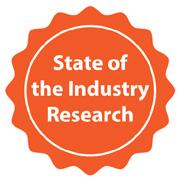
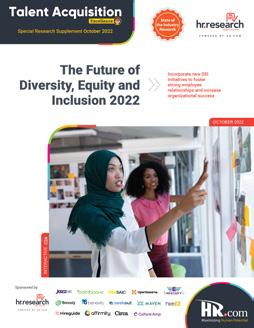








OCTOBER 2022 • Vol.10 • No.10 (ISSN 2564-1964) HOW THE PANDEMIC ENHANCED THE NEED FOR HR OUTSOURCING - Brenan German, President, Bright Talent, Inc. The Future of Diversity, Equity and Inclusion 2022 Page 31 - 96 Sponsored by

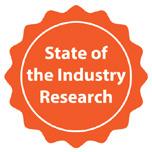
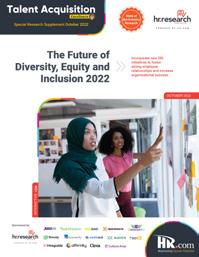
How The Pandemic Enhanced The Need For HR Outsourcing The role of HR is rapidly evolving - Brenan German, President, Bright Talent, Inc. 07 On the Cover Talent Acquisition Excellence OCTOBER 2022 Vol.10 No.10 Articles The Future of Diversity, Equity and Inclusion 2022 Page 31 - 96 26 5 Ways Outsourcing Can Help Companies Get Through an Economic Slump Talent outsourcing during uncertain times - Erica Franzen, VP, Talent Solutions and Operations, ELB Learning 98 The Dos And Don’ts Of Sourcing In The Now Of Work Guidelines recruiters should follow when navigating today’s sourcing landscape - Kelly Robinson, Founder & CEO, Panna Knows Recruiting 105 Crowdsourcing: Pushing The Limits For Talent Discover new means to engage talented candidates - Doug Hanson, CEO, Topcoder 111 Creative Sourcing, Storytelling Help Attract Hidden Talent Sourcing talent requires right strategy and creativity - Kathleen Duffy, President and CEO, Duffy Group, Inc. (ISSN 2564-1964)INDEX Sponsored 11 How to Give Job Seekers with a Criminal Record a Fair Chance - Abbey Carlton, Indeed 15 How To Improve HR Team’s Recruitment Efforts With Ethical AI Misconceptions about AI in HR have trumped its adoption in the field - Fred Rafilson, Chief I/O Psychologist, Talview 18 Employee Powered Hiring: Boosting Recruitment Through Employee Participation - Taylor Shaffer, Erin
Is Third-Party Recruitment And Outsourcing The Answer To Getting More Candidates?

With recruitment
hold for third-party
of
in the world, what does the
- Henri Nordström, CEO, Jobilla
6 Crucial Questions To Ask Before Outsourcing Recruitment

Making
- Chris Murdock, Co-Founder and Senior Partner, IQTalent Partners
Seth Morgan, Founder
CEO, MLA Companies
7 Tips To Improve Your Remote Onboarding Process


Onboarding can transform
to
and
- Ethan Drower, Co-Founder and Operating Partner, CiteMed
Top Picks 23 28 102 107
technology being one
the fastest growing industries
future
recruitment?
hiring decisions is never easy
Recession Strategy: How Fractional Hiring Can Help SMBs Finding expertise outside your company -
and
new staff from zero
high-performing team members quickly
painlessly
INDEX
Our
Editorial Purpose
Excellence Publications
HR.com
Talent Acquisition Excellence Team
Recruitment Outsourcing: The Way Forward
Searching for new talent can be a double-edged sword. While the
down the 6 Crucial Questions To Ask Before Outsourcing
Submissions
Please
of a new member of your team
very exciting, the anxieties
come along with a virtual stranger joining your organization can be intimidating.

Many companies perform all of the traditional recruitment tactics – e.g., posting job ads on online job boards – but don’t find enough qualified candidates. Typically, this is because they lack the skills and processes to perform recruitment marketing that attracts qualified talent.
So they turn to third-party recruitment agencies, who manually find and headhunt candidates and create solid recruitment pipelines.
If
are thinking of outsourcing

there are several factors that must be considered before making your decision.
Featured on the cover, this month, is Bright Talent’s Brenan German’s article, where he delves into How the Pandemic Enhanced The Need For HR Outsourcing. In another article, IQTalent Partners’ Chris Murdock lists
With recruitment technology being one of the fastest growing industries in the world, what does the future hold for third-party recruitment? Find your answer in Is Third-Party Recruitment And Outsourcing
The Answer To Getting More Candidates?, where Jobilla’s Henri Nordström, goes in-depth into how the third-party recruitment market is unfolding and what is in store for it in the future.
Also, read 7 Tips To Improve Your Remote Onboarding Process by Seth Mrgan, and Recession Strategy: How Fractional Hiring Can Help SMBs by Ethan Drower
That is not all! Also, check out the other articles included in this edition. We hope this edition of Talent Acquisition Excellence will help you find excellence in your recruiting, hiring, and onboarding efforts.
Happy
Deepa Damodaran
Editor, Talent Acquisition Excellence
Debbie Mcgrath Publisher, HR.com
For Advertising Opportunities, email: sales@hr.com
mission is to promote personal and professional development based on constructive values, sound ethics, and timeless principles.
Debbie McGrath
CEO,
- Publisher
Dawn Jeffers
VP, Sales Sue
Kelley
Director (Product, Marketing, and Research)
Babitha Balakrishnan and
Deepa
Damodaran
Excellence Publications Managers and Editors
Matt Charney
Talent
Acquisition Community Leader
Deepa Damodaran
Editor
Arun Kumar R
Design and Layout (Digital Magazine)
Vibha Kini and Chandra Shekar A K
Magazine
(Online Version)
& Correspondence
send any correspondence, articles, letters to the editor, and requests to reprint, republish, or excerpt articles to ePubEditors@hr.com For customer service, or information on products and services, call 1-877-472-6648
prospect
is
that
you
recruitment for added expertise and assistance,
EDITOR’S NOTE Disclaimer: The views, information, or opinions expressed in the Excellence ePublications are solely those of the authors and do not necessarily represent those of HR.com and its employees. Under no circumstances shall HR.com or its partners or affiliates be responsible or liable for any indirect or incidental damages arising out of these opinions and content. Subscribe now for $99 / year And get this magazine delivered to your inbox every month Become a Member Today to get it FREE! SIGN UP OR Write to the Editor at ePubEditors@hr.com Copyright © 2022 HR.com. No part of this publication may be reproduced or transmitted in any form without written permission from the publisher. Quotations must be credited. Talent Acquisition Excellence (ISSN 2564-1964) is published monthly by HR.com Limited, 56 Malone Road, Jacksons Point, Ontario L0E 1L0 Internet Address: www.hr.com
Recruitment.
Reading!
In a world of unparalleled challenges (global pandemic, racial injustice, politi cal rivalry, digital 4.0, emotional malaise), uncertainty reigns. Finding opportu nity in this context requires harnessing uncertainty and harnessing starts with reliable, valid, timely, and useful information. The Excellence publications are a superb source of such information. The authors provide insights with impact that will guide thought and action.
Dave Ulrich
Rensis Likert Professor, Ross School of Business, University of Michigan Partner, The RBL Group

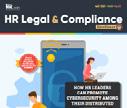
Excellence publications are my ‘go-to’ resource for contemporary and action able information to improve leadership, engagement, results, and retention.
Each edition offers rich and diverse perspectives for improving the employee experience and the workplace in general.

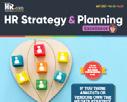


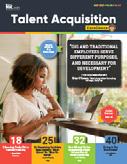



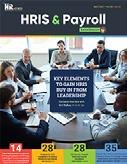

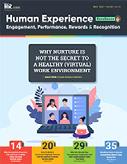 Julie Winkle Giulioni
Julie Winkle Giulioni

Author, Virtual /Live Keynote Presenter, Inc.’s Top 100 Leadership Speakers

I regularly read and contribute to Leadership Excellence and Talent Manage ment Excellence. I use many of the articles I read to augment my own presen tations and I often share the articles with my clients. They are always quick, right on target for the latest issues in my field, and appreciated by my clients.
If you want to stay up to date on the latest HR trends, choose a few of the different issues from the Excellence series of publications.

Kaye
CEO, BevKaye&Co.
We’re eager to hear your feedback on our magazines. Let us know your thoughts at ePubEditors@hr.com WHY EXCELLENCE PUBLICATIONS?
Dr. Beverly
How are our Talent Acquisition Products and Services helping to make you smarter?

Talent Acquisition Excellence - Monthly Interactive Learning Journal
This monthly interactive learning experience captures key metrics, actionable items and keeps you focused on developing yourself and corporation as top leaders in the Talent Acquisition space.
Talent Acquisition Webcasts for Credit
Talent Acquisition Virtual Events


Talent Acquisition Virtual Events offer webcasts and demos on topics in any of the staffing related programs: Contract Workforce and Talent Exchanges, Online Staffing and Sourcing, Recruitment Process Outsourcing, or Quality of Hire. Learn how to bring the right staffing and recruiting programs into your organization and make them impactful. Listen to the world’s top thought leaders in the staffing industry as they help companies make decisions in all areas of staffing and recruiting. Each Virtual Event consists of up to 10 credit webcasts.
HR.com webcasts deliver the latest Talent Acquisition industry news, research trends, best practices and case studies directly to your desktop. Webcasts are available live online with a downloadable podcast and a copy of the slides (PDF) available before and after each webcast. Earn all of the required recertification credits for aPHR, PHR, SPHR, GPHR, and SHRM Certifications. HR.com’s one-hour webcasts, in every HR specialty including Talent Acquisition, are pre-approved for HRCI and SHRM credit (excluding Demo webcasts).
Talent Acquisition Community
Join almost 55,000 HR.com members with a similar interest and focus on staffing and recruiting topics with one of the four staffing related online communities: Contract Workforce and Talent Exchanges, Online Staffing and Sourcing, Recruitment Process Outsourcing, or Quality of Hire. Share content and download research reports, blogs, and articles, network, and “follow” peers and have them “follow” you in a social network platform to communicate regularly and stay on top of the latest updates. This well established Community is an invaluable resource for any HR professional or manager.
Use these invaluable Talent Acquisition resources today! For more information phone: 1.877.472.6648 | email: sales@hr.com | www.hr.com
How The Pandemic Enhanced The Need For HR Outsourcing

The role of HR is rapidly evolving
By Brenan German, Bright Talent, Inc.
The pandemic brought about rapid changes in the HR function – from early days of figuring out work-from-home policies to supporting new hybrid work models, employee expectations and meeting the challenges of recruiting today. Now, as we (hopefully)
approach an endemic phase, the experiences of the pandemic have changed HR – and the job is not getting any easier.
Employees today expect even more flexibility from their employers with regard to work models and locations as well as
supporting health and work-life balance. The challenges of hiring and keeping great talent must be met by enhancing employee experience, enhancing global mobility and providing upskilling and reskilling opportunities. And HR, once reliant on processes that took weeks or months to do are now being asked to turn on a dime and work faster, more efficiently and with even greater attachment to business and revenue goals.
The Role of HR is Rapidly Evolving
According to McKinsey, “While the nature and purpose of the HR function have been evolving for years, the demands of the pandemic dramatically accelerated this transition. In interviews with more than 80 chief human resources officers (CHROs) at some of the largest organizations in the United States and Europe, we found more than 90 percent predict significant changes to the HR operating model during the next two to three years.”
Talent Acquisition Excellence presented by HR.com OCTOBER 2022 7 Submit Your Articles
COVER ARTICLE
While this poses new challenges for HR leaders, the experiences of the pandemic have also presented HR with unprecedented opportunities that will support this evolution of HR, including:
● Renewed focus on employee experience – This impacts HR in myriad ways, both as employees themselves and in HR’s expanded role in creating and fostering great candidate and employee experiences. It’s essential to understand the balance between human touch points versus self-service efficiencies.
● Expansion of HR Skill Sets – The HR generalist model is no longer effective, as today’s workforce has different workplace expectations that demand a more specialist approach. It’s impossible for a generalist to be good at recruiting and attracting talent as well as developing and nurturing talent as well as optimizing practices as well as retaining talent with comp-market-rate studies. In the advancement of the function, HR has been segmented into specialists that can be engaged seasonally or hired full-time. And, thanks to the pandemic’s influence on remote work capabilities, HR teams are no longer limited to the expertise in their area and can draw
from a much wider range of experts.
● Recognized business value
HR, more than ever, has a seat at the table as a critical business function. For many organizations, this means having to uplevel the already overworked core HR staff to handle the most strategic aspects of their jobs – while leaving a vacuum that must be filled to handle basic HR functions. These block-andtackle HR functions can often be managed with a shared service model.
Together, these enhanced experiences and expectations for HR leaders have created an opportunity for HR leaders to rethink their roles – to look more strategically at HR functions that are mission-critical to be done in-house, consider when outside expertise and specialists are needed to enhance and uplevel HR services and determine which HR functions could be better (and more cost-effectively) managed through outsourcing.
Outsourcing of HR Functions Is a FastGrowing Trend
“The pandemic has further accelerated HR outsourcing as enterprises seek service provider support to ensure talent retention and business continuity,” according to consulting firm Avasant in their report Global Hire-to-Retire Business Process Transformation 2021-22
RadarView . “HR outsourcing adoption grew by 7% between June 2020 and June 2021. This is attributable to a surge in cost constraints and business continuity impacted by the pandemic.”
While being faced with the huge challenge of sourcing, hiring and onboarding employees across company functions, HR itself is now in hiring mode. Finding – and retaining – HR leaders with the breadth and depth of experience an organization need is increasingly difficult.
At the same time, there are now considerably more highly experienced HR leaders who have decided to work from home and/or work part-time. These are often people with a great deal of experience and hard-to-find skills that, before the pandemic, would have needed to be onsite. Now, thanks to videoconferencing and remote work models, the right HR professional for your needs may be in a completely different area of the country – and it doesn’t matter.
Three Ways to Boost Effectiveness with HR Outsourcing
The key to success in HR outsourcing is knowing when and how to use it most effectively. When done well, it bolsters your internal HR team with both expertise and extra hands, and it affords HR leaders the time and space to engage more strategically as business leaders within their organizations.
Talent Acquisition Excellence presented by HR.com OCTOBER 2022 8 Submit Your Articles
How The Pandemic Enhanced The Need For HR Outsourcing
● Enter with a spirit of teamwork and growth for your internal HR team. As you prepare to outsource some HR functions, staying focused on your “why” helps your in-house HR people feel valued and appreciated while helping them work more effectively with interim or outsourced HR experts.
According to Deloitte, outsourcing creates new opportunities for existing employees, “Not only to improve morale but to promote creativity and enhance their overall value to the organization. Certain auxiliary tasks that are outsourced, allow in-house talent to focus on more strategic activities and projects that better leverage their skill sets, knowledge, and abilities and truly generate results. Similarly, for every employee that is not hired
to perform a support function, more budget is available to hire a reve nue-generating employee.”
● Maintain best practices and processes for outsourcing. Hiring needs are cyclical. In periods of great need, it’s tempting to add headcount to the HR department, but at the next economic downturn, when layoffs are again on the table, it’s often the cost centers like HR that take the biggest hit, losing people who aren’t directly tied to revenue. Having a plan ready for outsourcing, supported by best practices and processes, will give you a great deal more business agility.

● Consider ongoing outsourcing for some HR functions. HR departments need consistency and congruency in order to ensure the best experiences for candidates and employees regardless of
trends. So HR departments that are adept at outsourcing on a regular or ongoing basis develop trusted partnerships with outsourcing providers who bring the ability to scale up and scale down as needed. This gives your HR department access to a wider range of experts and enables you to bring in the help you need, right when it’s needed, without having to add a headcount that may be lost later.
How to Decide When to Outsource – Look for the Gaps
Before you engage with an outsourcing partner, it’s important to do an audit of your current team’s capabilities as well as their professional growth desires. Look for the gaps. Knowing what your HR team is good at, where you could grow your team internally and where you could use some expert help – is essential.
Talent Acquisition Excellence presented by HR.com OCTOBER 2022 9 Submit Your Articles
How The Pandemic Enhanced The Need For HR Outsourcing
For example, our company provides outsourced HR help across a range of corporate HR functions, so we receive inquiries on a lot of HR subjects. Here are four areas we are consistently asked to support – and the reasons companies tell us they are seeking outsourced help:
● Recruiting – This is a service many HR teams find is easiest to outsource first, partly because there is a great deal of domain expertise required and because having an outsourced partner that brings a host of their own contacts and capabilities to the table is a boon to recruiting efforts.
● HR systems – Many companies have invested in HR software that looked great in the demo but turned out to be significantly harder to implement in actual practice. Outsourcing is an easy way to get an experienced program manager who already knows how to configure and implement software to support the entire HRIS program.
● Compensation – As a critical aspect of both recruiting and retention, you want your compensation to be at a fair market rate and to be confident that you’re paying people fairly up and down pay bands as well as by years of experience. This requires you to always
have your finger on the pulse of the market. Now, with the enhanced mobility of the workforce, new questions arise, like, How should we compensate an employee we hired in Southern California salary be compensated if they move to Tennessee where the cost of living is much lower? Do we decrease their salary? Or should we increase the salary of our other Tennessee-based people? Merit increases are typically 3.5-4%, but inflation is 8% -- how are other companies handling that? These are all excellent questions that outsourced compensation experts can help you with.
● Global mobility – Like compensation, there are other aspects to mobility to be considered across state lines. But mobility isn’t just an in-country issue –mergers, acquisitions and international expansion are driving more mid-size companies into the multinational realm, and that requires special knowledge of immigration, tax and relocation processes. Is that expertise you will need to have on board permanently? Probably not. But, like your legal counsel, it’s an area you may need to return to on an as-needed basis, so establishing a partnership with an expert firm on an
outsourced basis may be just want you need.
Outsourcing can also be used strategically for things like HR program planning and project management, where an outside expert can provide best-practices guidance without undue influence from any internal history or politics. Having the 3rd party view from a credible, outsourced partner can also help you make the case for, and back up, your plans and decisions when it’s time to garner input and buy-in from management, giving HR a more visible seat at the table with other executive management.
So whether you need interim help to balance a heavy workload, expert help with highly specific HR functions you don’t need in-house, or general consultation and guidance, there is an HR outsourcing HR partner that’s right for you.
Brenan German is President at Bright Talent, Inc. Would you like to comment?

Talent Acquisition Excellence presented by HR.com OCTOBER 2022 10 Submit Your Articles
How The Pandemic Enhanced The Need For HR Outsourcing
How to Give Job Seekers with a Criminal Record a Fair Chance
 By Abbey Carlton, Indeed
By Abbey Carlton, Indeed
As many as 100 million people in the US have a criminal record. That’s almost one in every three Americans. Job seekers who have been involved with the criminal legal system — or justice-impacted job seekers — want the same things that everyone else wants in life: the ability to provide for themselves and take care of the people they love. But many of them are barred from pursuing this
due to employment policies and hiring practices that discriminate against them. According to the Sentencing Project, an advocacy center for criminal justice reform, more than 60% of the formerly incarcerated are still unemployed a year after being released from prison.1 Securing employment to earn a living is one of the biggest challenges for those reentering society.
Moreover, given the racial disparities in the criminal legal system’s impact, these challenges are more pronounced for Black Americans. Since the killing of George Floyd and the subsequent racial reckoning in the US, large employers have expressed deeper commitments to racial equity and diversity in their hiring and retention practices.2 Dedicating to fair chance hiring is one of many ways to realize those employer commitments.

Talent Acquisition Excellence presented by HR.com OCTOBER 2022 11 Submit Your Articles
SPONSORED ARTICLE
Fair chance hiring is the act of giv ing fair consideration to all quali fied candidates regardless of their criminal record. It gives justice-im pacted job seekers a better shot at landing a job and improving their lives. And they aren’t the only ones who benefit. Companies that hire fair chance candidates are re warded with better retention rates and reduced rehiring costs as these candidates tend to be more loyal. A study from Northwestern University found that justice-im pacted candidates who were hired had a 13% lower turnover rate.3
Indeed has been committed to providing individuals with criminal records a fair chance at employment since the very beginning (Indeed’s first employee in 2004 was a justice-impacted engineer), and it’s a journey the company is still on. Most recently, fair chance hiring has become a key focus of Indeed’s Environmental, Social and Governance (ESG) commitment to help 30 million job seekers facing barriers get jobs by 2030 — with the goal of breaking down bias and barriers in the hiring process.

So how can employers promote fair chance hiring and connect to this overlooked talent pool? Here are a few places to begin.
1. Address the Fears Your Company May Have Around Fair Chance Hiring
Many misconceptions and fears about justice-impacted job seekers keep them from accessing employment. Hiring
managers might have concerns about corporate liability, workplace safety or a negative response from their employees. Research has shown that justice-impacted job seekers are no more likely to steal, harass or harm colleagues than any other worker. A recent Indeed commissioned survey found that 92% of employee respondents would be comfortable working alongside a coworker with a nonviolent criminal record and a single, isolated incident, and the majority (54%) said they would be comfortable working alongside a coworker with a violent criminal record including multiple incidents. Yet these unfounded fears or concerns persist.
“In my experience, when business leaders and hiring managers balk at hiring people with criminal histories, it is because fear and emotion override rational business considerations that would otherwise drive their decision-making around hiring, even though most people seem to believe in the idea of a second chance,” says Andrew Glazier, the president and CEO of Defy Ventures, a nonprofit that provides entrepreneurship training to those with criminal histories.
Unconscious bias at your company could be keeping you from hiring winning talent. An important step is to make an effort to explain to stakeholders what fair chance hiring is and why it matters. You can start by launching a conversation. (You
can read more about Indeed’s approach here.)
2. Go Beyond #BanTheBox and Use this Practice Only as a Starting Point
According to the National Employment Law Project, 37 states have adopted “ban the box” policies,4 and this movement has been gaining steam for more than two decades. “Ban the box” refers to the check box commonly found on many job applications that ask applicants to indicate whether they’ve ever been convicted of a crime.
The goal of #BanTheBox policies is to delay any question about a criminal record to the later or final stages of the hiring process so that candidates can be evaluated solely on their abilities for the role. Instead of being immediately disqualified, this policy gives candidates with a criminal record an opportunity to be considered on the merits of their skills and capabilities.
However, to be clear, #BanTheBox is a bare minimum and a starting point. For example, as of last year, the federal government took an additional step by enacting a new law that prohibits federal contractors from asking about conviction records until after giving an applicant a preliminary job offer. This move toward true fair chance hiring goes further than #BanTheBox by regulating when and how employers can conduct background checks.
Talent Acquisition Excellence presented by HR.com OCTOBER 2022 12 Submit Your Articles
How to Give Job Seekers with a Criminal Record a Fair Chance
3. Highlight Your Commitment to Hiring Justice-Impacted Job Seekers
Some job sites focus exclusively on connecting justice-impacted candidates with open jobs. Launched in 2018, the platform Honest Jobs is the country’s largest fair chance employment marketplace. Founder Harley Blakeman was driven to start the organization after his drug-related arrest as a teen left the honor student with few employment options. Today, Honest Jobs employs a 20-person team of mostly justice-im pacted employees who connect participating employers with formerly incarcerated job seekers.

It’s also important to make it apparent and obvious to
potential candidates that you are committed to hiring justice-im pacted job seekers. Recently, for example, Indeed made its commitment more visible by adding purposeful language to all of its US-based job descriptions so that any potential candidate knows about our company’s commitment. It reads as follows: “We value diverse experiences, including those who have had prior contact with the criminal legal system. We are committed to providing individuals with criminal records, including formerly incarcerated individuals, a fair chance at employment.”
4. Reassess and Update Your Company’s Background Check Processes and Policies

Overly aggressive background check algorithms can automatically filter out candidates
with any type of criminal record — regardless of whether it was a minor, nonviolent crime that happened decades ago or even an offense that may no longer be a crime in the state where the candidate lives, such as marijuana possession. Human resources professionals should examine the parameters they have set with their background check provider to make sure it’s not excluding candidates with arrests or convictions that don’t relate to the core duties of the job. Depending on the provider or technology you use, you may be able to adjust your background check features to be thoughtful about what actually matters and what is creating an artificial barrier.
Outside of your technology, you can also reconsider how you evaluate the results of background checks. For example,
Talent Acquisition Excellence presented by HR.com OCTOBER 2022 13 Submit Your Articles
How to Give Job Seekers with a Criminal Record a Fair Chance
in 2015, Indeed updated its background check program to improve best practices for hiring justice-impacted job seekers. One best practice is to evaluate candidates based on the following considerations: nature of the crime, time when it was committed and nature of the job the candidate seeks. Indeed doesn’t look at anything related to criminal records until after making a conditional job offer to a candidate. This means candidates can be evaluated on their skills and abilities for the role.
5. Work with Partners Who Can Help You Grow Your Fair Chance Commitment
Many nonprofits and other organizations across the US focus on supporting justice-impacted people. Look into opportunities to collaborate with local partners to source, hire and retain this quality talent. National nonprofits such as Jails to Jobs and the Center for Workforce Inclusion focus on career training and job placement for the justice-impacted. Indeed partners with the Center for Employment Opportunities and works closely with Banyan Labs, a software development company that teaches, trains and supports justice-impacted job seekers and helps them graduate into jobs through on-the-job training programs. Through Indeed’s collaboration, Indeed places developers who are graduates of Banyan Labs’ Persevere program, giving them immediate on-the-job experience.
Being a fair chance employer means implementing scalable practices like those listed above. “Just saying you are ‘open’ to hiring people with criminal histories is not the same as being a fair-chance employer,” says Glazier.

All people have the right to work. And tapping into the quality but the often-overlooked population of justice-impacted job seekers is good for employers. By adopting fair chance policies, employers can not only be part of the solution, they can find the ideal candidate for the job.
SOURCES
1. The Sentencing Project—Americans with Criminal Records
2. Corporate America’s $50 Billion Promise, The Washington Post, August 2021; Workplace Racial Equity Depends on Job Retention as Much as Job Hires to Achieve a Truly Diverse Workforce, World Economic Forum, May 2021
3. Should You Hire Someone with a Criminal Record?
4. National Employment Law Project—Ban the Box Toolkit
RESOURCES
● Society for Human Resource Management—Ban the Box: What Employers Need to Know
● Ban the Box: US Cities, Countries, and States Adopt Fair Hiring Policies
● Out of Prison & Out of Work: Unemployment among Formerly Incarcerated People
Abbey Carlton is Vice President of Social Impact for Indeed, the world’s top job site. In this role, Abbey leads Indeed’s global efforts to break down bias and barriers in hiring through product innovation, partnerships and community initiatives. Prior to joining Indeed, Abbey spent nearly a decade at The Rockefeller Foundation, where she led the Foundation’s efforts on jobs and economic opportunity.
Under Abbey’s leadership, Rockefeller partnered with Fortune 500 companies, non-profits, federal and local governments, tech start ups and others to promote talent strategies that meet business objectives while improving the outcomes of workers who face barriers to employment. Earlier in her career, Abbey held research and program management positions with New York University’s Institute for Education and Social Policy, the US Department of Labor, and the law firm Cravath, Swaine and Moore, LLP. She is a fellow with The Aspen Institute’s First Movers program, a member of the Workforce Matters Steering Committee, and a mentor through PhilanthropyNY’s Young Leaders program.
Would you like to comment?
Talent Acquisition Excellence presented by HR.com OCTOBER 2022 14 Submit Your Articles
How to Give Job Seekers with a Criminal Record a Fair Chance
How To Improve HR Team’s Recruitment Efforts With Ethical AI
Misconceptions about AI in HR have trumped its adoption in the field
By Fred Rafilson, Talview
The ongoing effects of the great resignation have put talent acquisition teams to the test by highlighting the need for smarter recruiting efforts. Some may say the answer lies in using artificial intelligence (AI) with the promise of streamlining tasks and reducing workload. But is widespread adoption plausible when many are still hesitant to adopt it in their processes?
One of the main challenges lies in recognizing misconceptions, as misinformation can often mean many talent teams believe tech software is infused with biases. In reality, the main focus of ethical AI is objectively and accurately making assessments to erase any anomalies in the process.
The AI used for HR is often called ethical AI, as it follows rigorous testing and receives input through feedback loops that refine its inferences. The software does not have the final say. Human
professionals evaluate the results and ultimately make decisions in the recruiting process.
Dispelling such misconceptions about the tool can change the perception of AI and increase subsequent adoption. So, let us look at how ethical AI helps HR teams work at scale, solving their unique difficulties in producing quality recruitment decisions.
Ongoing Testing for Prevention of Bias Although many HR teams are already using automation to take care of repetitive administration tasks, helping scale efforts and speed up processes, AI adoption for more complex tasks has been slower. The key difference between the two tools is that automation only completes tasks via human input, while AI analyzes data and autonomously makes inferences to filter the best options for a recruiter to consider.
On average it takes only 60 seconds for a recruiter to read a resume and decide whether the candidate is suitable. While ethical AI can take less time to go through more CVs, its brightest advantage over human capabilities is its ability to continually remove bias from its processes. Constant testing, such as t-tests and effect size tests, update ongoing feedback loops in AI models to refine its predictions.
With machine learning (ML), algorithms used to assess applicants are fed massive amounts of job-related data gathered from successful recruitment results to significantly cut bias every time the model receives new input. Every time the model gets further information, it is examined to spot any inequitable results and retrained in the case of irregularities until these are eliminated. The more job-specific data it receives, the more unbiased it becomes.
Submit Your ArticlesTalent Acquisition Excellence presented by HR.com OCTOBER 2022 15
As a result, feedback loops help models be fairer to all applicants, regardless of race, ethnicity, gender, and disability traits.
Becoming More Reliable with Psycholinguistics
Psycholinguistics studies how the human brain processes speech and language development. AI software leverages psycholin guistics to analyze candidates’ potential based on their speech, with recorded interviews to recognize behavior, personality traits, and job competency, both reliably and efficiently.
Data given to the system can help examine the diversity
of candidates. Companies have increasingly realized that diversifying their teams means a more prosperous work environment with proactive solutions, and many are now actively looking to be more inclusive
Proactive software leverages psycholinguistics data to feed the model’s ML. Aided by an industrial-organizational (I/O) psychologist, inputs such as certain inflections and tones of voice are evaluated to create accurate outputs, like the correct inference on which traits are desired for a position. Data is
then used to train the software in determining the best candidates based on their discipline’s study of behavior at the workplace.
The moment an applicant sits down for an interview, at least 180 biases have already played a role in how a recruiter perceives them. Using psycholinguistics helps level the playing field, as it eliminates these human preconceptions, and making the AI more ethical. The software assesses candidates by their manner of speech to find the correct behavioral tendencies needed for a position, such as working in teams, accepting feedback, and problem-solving.
Submit Your ArticlesTalent Acquisition Excellence presented by HR.com OCTOBER 2022 16
How To Improve HR Team’s Recruitment Efforts With Ethical AI
Instead of advancing misconceptions, software that leverages this discipline will allow companies to study candidate metrics so HR can ensure diversity, equity and inclusion goals are being met.

Efficiently Lowering Workload for Recruiters
One of the most discussed advantages of AI is how it streamlines processes for HR departments. However, this notion is often mixed up with automation, when in reality, AI takes automation a step further by making inferences based on cues given. One example is where conversational AI chatbots are used to create deeper connections with applicants by accurately answering their questions after recognizing the text, tone, and motive of messages.
Ethical AI also cuts down efforts massively and accurately for recruiters to focus on more targeted tasks. Whether answering emails, chats, texts, or reading resumes, HR teams should rest assured that properly trained AI will help communicate with candidates and filter the best ones for the department to focus on.
In the same way humans evaluate subjects depending on the attributes they are looking for, AI is trained to turn qualitative information into quantitative data. The only difference is that software will take significantly
less than the human brain to perform these actions. Hence, engines gather, scrutinize, filter, and deliver a selection of appropriate resumes to HR teams from hundreds of applications.
Moving Away from Blind Hiring
The usage of psycholinguistics in AI for hiring processes is only done through voice recordings. It is key to shed light on the exclusion of biometrics in HR, which measures facial and body characteristics to make predictions. Although technology is quite advanced in AI software, the field is not quite ready to apply biometrics to assert a candidate’s competencies for a position, given its current inaccuracies
HR teams should stay wary of what different vendors sell because if it sounds too good to be true, it most likely is. Biometrics and face recognition tools, as far as current technology goes, might only disrupt the opportunities of applicants instead of improving them.
Despite not using physical char acteristics to evaluate candidates the same way blind hiring does, to strip candidates of certain personal traits, ethical AI does not have the same goal in mind. Applying psycholinguistics in the field is the opposite of erasing applicants’ backgrounds. AI engines make a well-rounded decision on candidates, based on job-specific aspects, such
as behavioral tendencies to fit a position without needing to erase any information and become ‘blind’ to certain aspects. The software joins data with additional information from the candidate’s resume to give recruiters a complete assessment of who they are.
The ethical use of AI ensures the consistent gathering and unbiased analysis of candidate data, while decision-making is still left to humans, not the software itself. Addressing this misconception can help HR teams trust the software to do large-scale jobs ethically. Its design helps teams focus on delivering a pleasant recruiting process—where candidates stay informed, and doubts are answered in a timely fashion with the help of AI.
Would you like to comment?
Submit Your ArticlesTalent Acquisition Excellence presented by HR.com OCTOBER 2022 17
Fred Rafilso is Chief I/O Psychologist at Talview.
How To Improve HR Team’s Recruitment Efforts With Ethical AI
Employee Powered Hiring: Boosting Recruitment Through Employee Participation
By Taylor Shaffer, Erin
While employee referrals have been the gold standard for talent acquisition for decades, engaging employees to participate in talent acquisition has always been a hurdle to a successful employee referral policy. There are, however, proven tactics to increase participation and engage your employees in their referral program.

The average business is getting between 8% to 15% of their hires from referrals, while successful programs are sourcing 35%+ hires. How are they accomplishing this? By unlocking the potential of employee-powered hiring with proper incentives and engagement. The benefits that come from increased referrals can be extensive, with a direct return on investment and an indirect return on investment.

Talent Acquisition Excellence presented by HR.com OCTOBER 2022 18 Submit Your Articles
There are a number of benefits that come from employee referrals, but how do you get the most out of your employee referral policy? To see an increase in referrals you first need to make sure you are providing the right incentives and effective engagement tactics. The good news is you do not need to start from the ground up, you can use your current employee referral policy by just adding a few extra man hours and 5 proven tactics to get employees to participate.
5 Steps of a Successful Employee Referral Program
1.
2.
3.
4.
5.
case:
(bonus)
burning
and
in
enablement and
Learn, adjust, keep going
Business Case: A Burning Platform and Investment
If you have a burning platform and investment, it is important to take a look at a number of things. Start with how many hires you were producing from your original employee referral program. To inspire a level of transformation you want to first establish your baseline percent of hires. After you figure out your goals it is time to use your best resource; your employees and ignite the top of the funnel.
From a referral perspective and an empowering employee perspective, it can be a struggle in lighting up your top of the funnel and taking advantage of the employees you have. How do you get your internal colleagues much more engaged in our talent acquisition challenges and opportunities? Moving from a reactive mindset to a proactive one and how can you engage your employees on a daily to weekly basis and let them know their opportunities at hand? How do I manage some of these policy-level things that are important in the employee ecosystem? What’s in it for your employees to recruit on their behalf?
Hiring will always be front of mind when it comes to a business, but it doesn’t have to be difficult to find the right candidate. Your employees know your company best, so why not have them become your best recruitment tool? Referred employees are known to have a lesser turnover rate and a longer employee lifespan. If your employee is referring to hardworking, reliable workers that they would like to work with then they will also want to stay longer.
Keep your cost per hire competitive. Keeping your recruitment pipeline full of great candidates is worth the investment. In the long run, you are saving money on recruitment costs and focusing on a better ROI. After you put thought into all of your expenses like bonuses and prizes, your team that will run the program, and the overall technology investment, you will find that you are keeping your cost per hire low while benefiting the organization altogether.
Policy (Bonus) Strategy: Invest in Your Outcomes
The referral policy has already been created, but how do you standardize it for maximum effectiveness? Consider your referral policy as the base or the root of your overall hiring goal. Take the next step in transforming your policy to build out your employee referral program. If you let different parts of your organization do their own thing it can become complicated and messy.
At the moment it may not seem like a big deal, but it ends up being your overall downfall for an effective referral program. The most successful programs have a day-one onboarding of the employee referral platform. The first day you have an employee start ask them what three people they would want to work with. It is as easy as having them write the names down on a piece of paper.
That is three immediate leads that you didn’t have before. This helps to engage users and also let them know that your employee referral policy exists from the very beginning of their employee lifecycle.
Business
A
platform
investment
Policy
strategy: Invest
your outcomes
Scale: Technology
User Adoption
Marketing: The hidden superpower
Momentum:
Talent Acquisition Excellence presented by HR.com OCTOBER 2022 19 Submit Your Articles Employee Powered Hiring: Boosting Recruitment Through Employee Participation
Scale: Technology Enablement and User Adoption
How do you scale your business when you are dealing with a handful of different types of employees? No employee is the same; you could be a healthcare company with a registered nurse who is not thinking about talent acquisition in any way, but is entirely focused on their job. This is a great source to tap into for candidate flow. This person is passionate about their career and goal-focused. If you consider the network that you can build from employee referrals that becomes the starting point of scaling your business.
Marketing: The Hidden Superpower
Finding new and novel ways to find and engage talent is difficult. Talent acquisition has attempted for years to scale word of mouth through their referral program, yet has generally failed at doing so. This leads to recruiters tolerating an average of 5-15% of their hires coming from referrals.

The most powerful marketing tool is right at your fingertips. Take advantage of word-of-mouth marketing in your day-to-day. Everyone knows
referrals are the best source of high-quality talent, which comes from word of mouth. The easiest way to start filling positions is by having your employees talk about your company. This leads to a longer employee lifespan and increased satisfaction.
Let your employees become your billboards/walking advertisements. If an employee is happy at your company and within their position, they are going to talk about it to other people. This is the best method of recruiting because everyone wants to love what they do and who they work for.
Having referrals is a great indicator of employee happiness. if you are losing more people than you are taking on then you have another issue on your hands. If you have culture problems, an exhausted employee, or an employee who is not happy within their position this could be a huge blocker for growth and lead to other issues within your company.
The highest performing employee referral programs deliver 35-50% of their hiring from referrals. Employ ee-powered hiring is an effective source in engaging employees to refer, while helping them to feel empowered in your recruitment efforts.
Employee Powered Hiring: Boosting Recruitment Through Employee Participation Talent Acquisition Excellence presented by HR.com OCTOBER 2022 20 Submit Your Articles
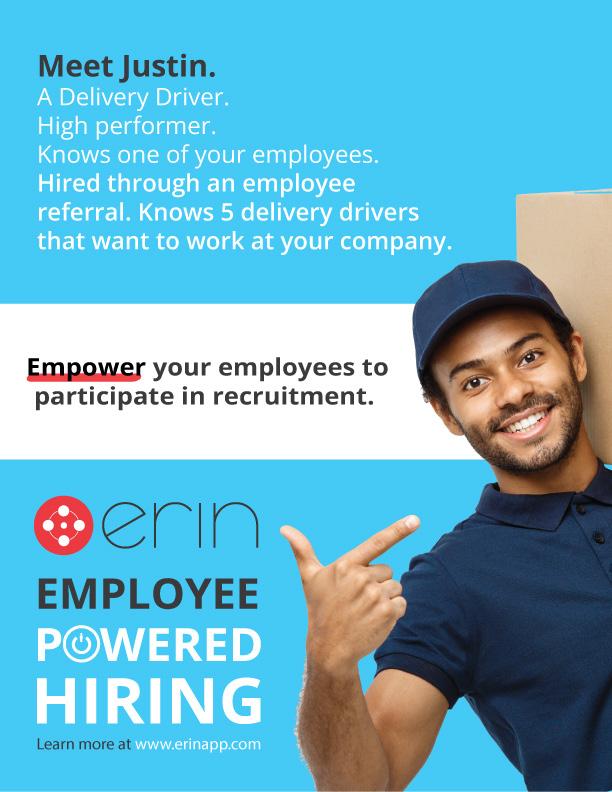
Momentum: Learn, Adjust, and Keep Going
Spark the initial positive outcomes. It can take 66 days to build a new habit. Knowing that focus on consistency with referral sourcing and best practices over a period of 66 days. Arm your TA team with the right resources. This can be emails, handouts, and overall messaging you want to get across to your employees. Make it easy for your recruiters. Obviously, employees like to be rewarded, but if you can make it competitive it can drive your team to not only work harder but can help teams/departments to work together towards the same goal and help engage across the organization.
Keep up the momentum with your employee referral program. If your TA team is not making referrals a priority why should your employees? It is very common to see immediate results, but you need to keep things consistent and focus on adoption for the ultimate results.
Key Takeaways
Employee referrals will always be a great hiring tool, take advantage of your referral policy to establish goals in your recruitment efforts. Invest in the outcomes you want to see by first establishing a baseline.
This will lead to both a reduction in turnover and an increased return on investment. Incorporate a bonus strategy across the organization to standardize your employee referral policy. Gamify the experience with cash bonuses, prizes, and more to keep your employees engaged and help them want to participate in your recruitment efforts.
In order to grow your organization, you have to have employees that are your walking billboards. Employees that are happy to speak on behalf of your company and their position. Word of mouth is the best marketing tool you can use to help fill your recruiting needs. Lastly, keep the momentum going across your organization. If you prioritize your employee referral efforts your employees will help to do the same.
Taylor Shaffer is a marketing specialist at ERIN. Her career in marketing and communications has led to a passion for software and technology. Her career spans from managing social media platforms to all things marketing. Taylor is a graduate of Indiana University of Pennsylvania where she studied communications media.



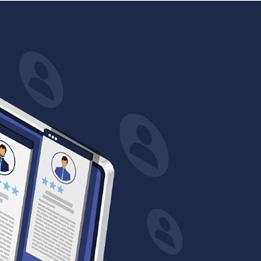


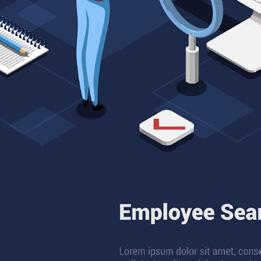


Would you like to comment?
Employee Powered Hiring: Boosting Recruitment Through Employee Participation Talent Acquisition Excellence presented by HR.com OCTOBER 2022 22 Submit Your Articles
Is Third-Party Recruitment And Outsourcing The Answer To Getting More Candidates?
With recruitment technology being one of the fastest growing industries in the world, what does the future hold for third-party recruitment?
By Henri Nordström, Jobilla
Right now, candidate acquisition is a struggle.
Eighty percent of organizations say they are having difficulty filling openings due to an ongoing shortage of skills. Recruitment is no longer just a bottleneck for company growth, it’s a bottleneck for companies to run their existing business.
When headhunting first started, it was called “executive search.” Now, headhunting and third-party recruitment agencies have become a common tactic for companies to find any type of talent – sometimes because they want to, but mostly because they are forced to. Without third-party recruitment agencies, many companies would be unable to find talent as easily. Forty five percent of employers say they can’t find the workers with the skills they need, according to Manpower Group
Many companies perform all of the traditional recruitment tactics – e.g., posting job ads on online job boards – but don’t find enough qualified candidates. Typically, this is because they lack the skills and processes to perform recruitment marketing that attracts qualified talent. So they turn to third-party recruitment agencies, who manually find and headhunt candidates and create solid recruitment pipelines.
But is manually doing the job a long-term solution? In the Matrix, Agent Smith famously said, “Never send a human to do a machine’s job.” In the future, all industries will be automated to some extent. With recruitment technology being one of the fastest growing industries in the world, it can be said with certainty that recruitment marketing and candidate acquisition will be automated – with people just adding the critical human touch when needed.
Submit Your ArticlesTalent Acquisition Excellence presented by HR.com OCTOBER 2022 23
TOP PICK
What Third-Party Recruitment Agencies Do Well
There’s a huge place for third-party recruitment agencies in the market right now – and for a good reason. Many agencies approach recruitment in the right way – they approach candidates and don’t wait for the candidate to apply for the job. They might contact people on LinkedIn or otherwise manually search and find good candidates to headhunt.
Because the market is in quite an unstable position with the talent shortage, great resignation, and other HR trends we’re currently seeing, third-party recruiters have been needed more than ever. There are several examples of companies forced to buy third-party recruitment services or die as a business. They had to spend a megaton of money to find workers or lose their business because they couldn’t function operationally.
For those companies that elect proactively to work with third-party recruiters, HR gets the time to concentrate on other tasks and fulfill other duties.

What Could Third-Party Recruitment Agencies Do Better?
They won’t tell you this, but recruitment agencies sometimes struggle to find candidates. This is because they usually don’t do solid digital recruitment marketing – instead, they use traditional methods to find candidates like posting job ads on job portals. With these methods, recruitment agencies fail to add value to the most important stage of the funnel: candidate attraction.
Additionally, in many other industries, consultants try to solve the problem so that they’re not needed anymore – i.e., the company learns how to do it themselves. But recruitment agencies usually don’t improve the company’s processes; they just find candidates and provide support during the hiring process. This doesn’t solve the company’s future problems. Companies then become stuck in a repeat loop – which costs them a lot of money. And by spending this money, companies can’t build their own methods and processes for better recruitment.
Submit Your ArticlesTalent Acquisition Excellence presented by HR.com OCTOBER 2022 24
Is Third-Party Recruitment And Outsourcing The Answer To Getting More Candidates?
Third-party recruitment agencies’ reliance on manual work is a short-term solution that persists. In the digital era, traditional recruitment methods shouldn’t be growing, but they are – as making the internal change to automated and digitized recruitment is really hard. And it makes agencies money – fair play. Why would they want to change?
But, for everyone to find the best candidates in the long term, we need to reinvent the whole recruitment process and perform recruitment marketing like a professional marketer, which isn’t easy for a recruiter. It requires trying, experimenting, failing, and everything in between. Candidate acquisition can be automated; it shouldn’t be done manually by people. It follows certain patterns – and when there are patterns, you can build rules for automation.
Future of Third-Party Recruitment
Third-party recruitment will undoubtedly change towards automation in the future. However, it’s hard to see agencies changing the industry in the long term. Just like how Uber disrupted the taxi industry, or Airbnb disrupted hospitality, new tech companies
will come in and reinvent the whole structure of how recruitment is executed in the next 10-20 years.
Until then, companies need to adapt their mindset to a candidate-first approach and look to implement efficient candidate marketing tactics that make applying as smooth as possible to the right candidates.

In the recruitment process, there are tasks that are easy to automate and complicated psychological processes that will not be automated – at least in the near future. Third party recruiting will be a combination of high-level automation and human professional expertise. Ultimately, the business model of outsourcing recruiting for €8-20k/recruitment and manually headhunting people is not going to last.

Submit Your ArticlesTalent Acquisition Excellence presented by HR.com OCTOBER 2022 25
Henri Nordström is CEO of Jobilla. Would you like to comment?
Is Third-Party Recruitment And Outsourcing The Answer To Getting More Candidates?
5 Ways Outsourcing Can Help Companies Get Through an Economic Slump
Talent outsourcing during uncertain times
By Erica Franzen, ELB Learning
The jury is still out on whether or not the U.S. has entered a full-blown recession, but many business leaders are not waiting around to find out. The current economic climate is uniquely challenging because, in addition to rumors about a downturn, executives are dealing with the highest inflation rate in decades, a shortage of qualified talent and a rapidly shifting picture of what the workplace looks like.
These compounded factors have many companies reevaluating strategies and budgets for the coming months. While some are slashing costs or putting a freeze on hiring, others are looking at the long-term and trying to reconcile future growth plans with caution in the present. Either group may benefit from bringing in outside contractors to accomplish
daily tasks, lend expertise or fill temporary roles.
Outsourcing has been embraced by a variety of industries since the early 90s. As the gig economy has picked up steam, contractors
have become not only increasingly available, but also more knowledgeable and professional. And as businesses take a hard look at how they can be more efficient, outsourcing is a great tool to fill the gaps.
Submit Your ArticlesTalent Acquisition Excellence presented by HR.com OCTOBER 2022 26
Here are just 5 of the ways bringing on contracted talent can help companies in uncertain times.
1. It’s Less Expensive
The Society of Human Resource Management (SHRM) estimates that it costs at least $4700 to recruit a new employee. The costs to onboard, the break in productivity, and the emotional toll on both the team integrating with the new hire and the HR team tasked with the hiring process are all above and beyond the SHRM dollar estimate.
Further, full-time employees require salary, benefits, additional taxes to the employer, insurance, training, equipment and more. Of course, over the long term, contract workers may not be able to fulfill every need of an organization, but in a challenging economic environment, they will definitely save you money.
2. Work Gets Done Faster
Sometimes deadlines crop up that just are not possible to hit. And, if your team is getting smaller due to budget cuts, it is even tougher. Whether it is an overhaul of an existing program, creating new content, redesigning a website, training your team, or something else that has to be done fast, contractors can help. By bringing on more workers, managers can get large volumes of work done in a fraction of the time.
Meeting deadlines still takes planning. An outsourcing firm
needs time to find workers with the right skillset, and contract workers can not just drop all of their other clients in order to turn something around in an unrealistic time frame. However, businesses that strategically plan for large projects through outsourcing will be miles ahead when those deadlines hit.
3. Expert Help When You Need it
Our world is evolving constantly, with new technology, tools and techniques. Learning every single one of them would be a waste of time for the average worker, and hiring new workers when times are tough is not always an option. Luckily, there are experts available to hire on a short-term basis.
Experts can consult on everything from software to investing, but it is important to take time to find the right expert with enough experience to truly work through your problems. It may help to find an outsourcing agency that specializes in your specific industry to ensure that your needs are met.
4. New Things Are within Reach
Branching out into new ideas and bringing new products and services into your business can be risky, but without innovation, there is no growth. In a tough economy, CEOs are looking for ways to cut costs, not take on new projects.
That’s where outsourcing comes in. Bringing on contractors in the

short term can help your business explore new markets and develop interesting new concepts without investing in more full-time employees.
5. More Flexibility
The bottom line is, when the economy is uncertain, businesses need options in order to stay competitive without ballooning their budget. Through outsourcing, companies can bring on workers when they need them, and cut back when they do not. This allows the business to take on new projects without worrying about maintaining a team of full-time employees.
Staying agile is the key to surviving a downturn, whether or not it becomes a recession. Outsourcing is one way to remain flexible, save money, continue to get everything done and continue to explore future possibilities.
Submit Your ArticlesTalent Acquisition Excellence presented by HR.com OCTOBER 2022 27
5 Ways Outsourcing Can Help Companies Get Through an Economic Slump
Erica Franzen is VP of Talent Solutions and Operations at ELB Learning Would you like to comment?
6 Crucial Questions To Ask Before Outsourcing Recruitment
Making hiring decisions is never easy
Searching for new talent can be a double-edged sword. While the prospect of a new member of your team is very exciting, the anxieties that come along with a virtual stranger joining your organization can be intimidating.
Making these hiring decisions is never easy by definition, but if you are thinking of outsourcing recruitment for added expertise and assistance, keep reading to find out the must-ask questions to consider before making your decision.
1. What Are My In-House Recruiting Resources And Options?
Nearly every company has some version of an internal recruiting function, but does yours have the bandwidth necessary for your needs? When considering an outsourced search firm, you need to weigh the opportunity cost against the actual financial cost of the decision.
An in-house search might feel like the most comfortable option, especially if your internal team manages your other recruiting efforts. By keeping the search in-house, you see all moving parts and have complete control of the process from start to finish. You do not have to worry about small details (or red flags) that could get past you.
But, at what point do you consider outsourcing recruitment? When you find your team so overburdened with your day-to-day duties that you can not give time to the daunting task of choosing a new employee, it is time to look for an outside expert.
If you feel strongly about keeping the search in-house, another option is to hire a full-time recruiter. A seasoned recruiter will likely bring a solid network of potential candidates at all stages of their careers.
Being fully immersed in your company’s culture will also give an in-house recruiter a genuine idea of who would make a good fit to join the company, and make a hiring decision that reinforces your company’s mission and values. Consider the costs and long-term challenges and solutions having another full-time employee can provide before deciding to build your team.
2. What About Confidentiality?
If you are seeking confidentiality in recruiting, it is a sign you should hire an outsourced recruitment firm. If you are using a company to fill an executive role, it goes without saying that you need someone with a proven history of leadership and success. Most likely, they are content in the current situation, making them passive candidates.
Chris Murdock, IQTalent Partners
Talent Acquisition Excellence presented by HR.com OCTOBER 2022 28 Submit Your Articles
TOP PICK
When connecting with these individuals, discretion is essential to not disrupt their current work environment. With a third-party search team, specific company information is left out of the equation until the vetting process has progressed. You can trust that the search will be private and remain out of the public eye (and out of the corporate gossip chain).
When executive search is the top priority, using an organization eases the strain of finding new leadership, but when you are simply looking for new talent - outsourced firms are the route to take.
3. What Is Your Budget?
Hiring an outsourced recruitment service to conduct the search will come with a price tag. Before hiring a firm, assess your budget, and evaluate the fee structure of various firms. Most often, the price of the search is based on the salary of the position. The higher the salary, the more expensive the search.
Ways to help determine your projected budget include:
● What role(s) are you recruiting for?
● What level of experience is this candidate expected to have?
● What is the desired salary range for this position?
If you are looking to source an executive role, it is important to note the executive search model is changing with the advent of technology that allows more people access to a larger candidate pool. The traditional model of hiring an executive search firm and paying a large fee is no longer the only option.

4. Do You Need to Keep Hiring for the Same Roles?
Some individual roles can be difficult to hire for, owing to various reasons, ranging from the expertise needed by the candidate, the location of the role, market demand, to a host of many other factors. When you catch your recruiting team hiring repeatedly for the same role, it is a clear indication that this role is specialized and warrants a close eye.
Outsourced recruiting agencies famously have access to curated talent pipelines and provide specialized teams dedicated to your business. This allows you to leverage their resources and insights while simultaneously accessing a reliable pipeline if you suddenly need a time-sensitive new hire.
Additionally, having an external team familiar with the intricacies of a role and the needed characteristics for a good fit can provide you with even more tailor-made candidates ready to embark on the journey of joining your organization.
6 Crucial Questions To Ask Before Outsourcing Recruitment Talent Acquisition Excellence presented by HR.com OCTOBER 2022 29 Submit Your Articles
5. Is Your Company in a Stage of Rapid Growth?
If you are in a season of accelerated growth, internal recruiting can easily fall by the wayside.
By outsourcing recruiting, you can provide yourself and your team with the valuable time and energy needed to continue growing and let the outsourced professionals take care of finding your next valuable hires.
Secure the time and resources needed for your organization to keep up with the latest advancements by allowing an outsourced firm to do the heavy lifting for you.

6. What Are the Different Types of Search Firms?




No two search firms are the same, but there are two major categories: retained and contingent.
i. Retained
Retained search often starts with an up-front fee with continual invoices throughout the search. The client signs a contract for a specific amount of time, which will be paid in full, typically monthly, until the end of the contract period. In this case, a recruiter will source many qualified candidates from their network to present to an organization.
The candidates are then vetted within the search firm, and the top clients from the original pool are presented to the client. Because the client has signed a retained contract, the recruiters are not incentivized to find candidates promptly. The client will continue paying the retainer fee, regardless of the results.
ii. Contingent Contingency search firms are exactly what they sound like. The recruiter or firm is paid once they have delivered a qualified candidate that is hired for the role. The contingent search firm will source a large candidate pool from their network as quickly as possible because the focus is on the actual hire rather than the process to find the best person.
Additionally, in a quick process, you should ensure that the recruiter is thoroughly vetting candidates despite speed. Contingency firms tend to be very transactional, working from one transaction to the next to earn the (large) commission.
This article first appeared here. Chris Murdock is the Co-Founder and Senior Partner of IQTalent Partners. Chris has over 12 years of executive recruiting experience and leads search execution and client relationships along with supporting searches across the firm. Prior to Founding IQTalent Partners, Chris was a sourcer with Yahoo!’s internal Executive Recruiting team in the corporate offices in Sunnyvale, California. Previous to Yahoo!
Would you like to comment?

6 Crucial Questions To Ask Before Outsourcing Recruitment Talent Acquisition Excellence presented by HR.com OCTOBER 2022 30 Submit Your Articles
The Future of Diversity, Equity and Inclusion 2022


Incorporate new

initiatives to foster strong employee relationships and increase organizational success








Sponsored by:
DEI
INTERACTIVE OCTOBER 2022 Special Research Supplement October 2022
Abigail Matsumoto, Momentive

Angela Peacock,
Marie-Reine Pugh,
JazzHR





Kathleen O’Donnell, Bonusly

Neufeld,





The Future of Talent Acquisition 2022-23 Exclusive Study By The HR Research Institute INDEX 33 ARTICLES RESEARCH REPORT SUMMARY Bringing Your Whole Self to Work: Diversity’s Greatest Myth By
PDT Global (part of Affirmity) HR’s Guide to Communicating with Inclusivity By
BambooHR Top 5 DEI Challenges in the Workplace By Katie Coleman, Circa The High-Impact DEI Actions that Matter By Culture Amp Best Practices for Successful Outbound Recruiting By Kunwar Ishan Sharma, HireEZ Tips to Reduce Interviewer Bias Alycia Damp, Hireguide 4 Steps for Incorporating Pay Equity into Your Company By Robert S. Sheen, Trusaic 38 66 70 73 76 82 88 91 42 46 49 54 59 62 The HR Research Institute, powered by HR.com, the world’s largest social network for Human Resources professionals, is a key part of our mandate to inform and educate today’s HR professionals. Over the past three years, the HR Research Institute has produced more than 85 exclusive primary research and state of the industry reports, along with corresponding infographics in many cases, based on the surveys of thousands of HR professionals. Each research report highlights current HR trends, benchmarks, and industry best practices. HR Research Institute Reports and Infographics are available online, and always free, at www.hr.com/featuredresearch Survey conducted by: Sponsored by: How the Golden State Warriors Use Momentive to Advance DEI Across Their Organization By
How Snap Inc. Is Future-Proofing Their Family Benefits Program for a New World of Work By Stephen Elliot, Maven Clinic Best Practices for Crafting a Job Description that Attracts Diverse Candidates By
DEI at Work: 5 Best Practices and 3 Common Mistakes to Avoid By
The 10 Biggest ERG Challenges (and How to Solve Them) By Chad
Benevity Find Your Company’s DEI Anchor By OpenSesame Strategic Empathy By EmpathifyU
The Future of Diversity, Equity and Inclusion 2022
 Exclusive Study By The HR Research Institute
Exclusive Study By The HR Research Institute

Sponsored by:






Mostof today’s organizations lack mature and effective diversity, equity, and inclusion (DEI) programs, according to our study*.
The organizations that do have successful DEI programs tend to share a range of characteristics and practices. In short, to do DEI well, these organizations comprehensively define and work at it.
Key Findings from the Study
● Companies struggle to fully mature their DEI programs.
● While nearly half agree or strongly agree that pay is equitable in their organization, there is much room for improvement.
● Most companies fall short in the areas of metrics and training.

● Although progress has been made in cultivating a more diverse workforce, many companies still have a long way to go.
● Companies are often not considering benefit programs that appeal to a diverse workforce, leaving considerable room for improvement.
How Developed Are Today’s DEI Practices?
Only about a quarter of organizations have overall DEI initiatives that could be deemed as mature
In fact, less than one-quarter of HR professionals indicate their organizations have “advanced” (18%) or “expert” (4%) DEI practices. The remaining 78% fall into less mature stages.


Just 9% rate their organization’s DEI initiatives as very effective (that is, respondents say their or ganization’s DEI initiatives are an 8, 9 or 10 on a 10-point scale). This lends support to the previous

STATE OF THE INDUSTRY RESEARCH33
Incorporate new DEI initiatives to foster strong employee relationships and increase organizational success
findings that most do not view their organization’s DEI practices as being in the “advanced” or “expert” stages.
How Diverse Is Today’s Workforce?
Although some companies indicate progress in overall workforce diversity, there is much room for
Roughly half (54%) of respondents agree or strong ly agree their organization’s corporate culture is more inclusive than it was two years ago. However, slightly fewer indicate their workforce reflects the demographics of today’s marketplace (45%) and about the same say their workforces are more diverse than two years ago (48%).
About half of respondents (47%) say women represent no more than 40% of their organization’s people managers. Another 26% say women make up 41% to 60% of people managers. On the other end of the spectrum, more than a quarter (28%) say women represent 61% or more of their organiza tion’s people managers.
Further, our study finds that more than half (57%) of respondents say ethnic/racial minorities comprise no more than 20% of their organizations’ people managers. This suggests ethnic minorities are also under-represented in many leadership ranks.
34 STATE OF THE INDUSTRY RESEARCH
improvement
0 10 20 30 40 50 60 Agree Strongly agree Corporate culture is more inclusive than it was two years ago Workforce is more diverse than it was two years ago Workforce reflects the demographics of the marketplace 54% 48% 45% 36% 18% 14%34% 35% 10% Survey Statement: As they pertain to your organization, to what degree do you agree with the following statements: Percent responding agree or strongly agree Just 10% strongly agree their workforces reflect marketplace demographics
What Types of DEI Inclusive Work Arrange ments Do Companies Offer?
Paid time off (PTO)
Four-fifths of HR professionals (79%) most com monly indicate PTO is a company work arrange ment. The second most common benefit is remote work options (73%). Slightly fewer participants, however, indicate flexible work options (70%).
Employees with young children are more likely to prefer remote and flexible models. Our research shows that just 58% offer paid parental leave and even fewer offer benefits for domestic partners (43%) or miscarriage/pregnancy loss leave (25%).
How Well Do Organizations Understand and Measure DEI Success?
Only one-fifth of organizations know
Just 20% of respondents agree or strongly agree that they know just how effective DEI programs are. We asked about the degree to which organizations measure organizational DEI. We found only 20% establish and measure DEI metrics and reporting to a high or very high degree, and even fewer say the same about analyzing turnover using a DEI lens (16%).
35 STATE OF THE INDUSTRY RESEARCH
is the most commonly offered benefit
just how effective their DEI programs are
0 5 10 15 20 20% 16% 8%12% 9%7% Very highHigh Establish and measure DEI analytics and reporting Analyze turnover using a DEI lens Survey Question: To what degree does your organization use the following DEI initiatives?
What Types of DEI Training Are Most Common?
Companies most commonly provide unconscious bias training

Among organizations that offer DEI-related train ing, the most widely provided is unconscious bias training (69%). However, only about half use inclu sion awareness training (55%). Slightly fewer con duct conversations training (48%) and fewer have training for conflict resolutions (33%) and DEI-spe cific communication practices training (23%).
* In the survey on which this study is based, we defined DEI initiatives as those “relating to the presence of underrepresented groups (e.g., in terms of ethnicity, gender, sexual orientation, disability and more) in organizations, how valued and welcome underrepresented groups feel in those organizations, and the degree to which these groups enjoy equal opportunities, including but not limited to equitable pay.”
To learn much more about the survey on The Future of Diversity, Equity and Inclusion 2022 and for key insights and strategic takeaways, we invite you to read the complete report here
Read the Research Report

36 STATE OF THE INDUSTRY RESEARCH


Align your brand with this year’s State of the Industry hot HR topics and showcase your expertise Sponsor any of this year’s state of the industry research topics and come away with your very own affordable and branded research report and infographic, establish yourself as an industry thought leader by presenting at a one-day Virtual Event, and bolster sales through the generation of qualified leads. See list of hot industry research topics below and give us a call to get started. A State of the Industry Research & Virtual Event Sponsorship Opportunity Contact us today to get started at sales@hr.com | 1.877.472.6648 | hr.com/industryresearch The Future of Employee Engagement Nov 2-3, 2022 Learn more at: hr.com/ engagement The State of Internal Mobility, Succession, and Career Development Nov 15, 2022 Learn more at: hr.com/ InternalMobilityResearch The Future of Recruitment Technologies Dec 7-8, 2022 Learn more at: hr.com/Recruitment TechnologiesResearch
Bringing Your Whole Self to Work: Diversity’s Greatest Myth
Angela Peacock, PDT Global (part of Affirmity)
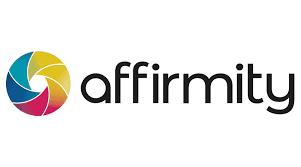
Imagine you’ve been in an organization for a couple of months and you receive an invite for a family fun day with a cartoon character fancy dress theme. The theme couldn’t be more perfect!. Your family loves cartoons, loves dressing up, and launches into preparing for the event with boundless enthusiasm.
The day arrives, you all pile into the station wagon as an assortment of comic book heroes, Disney villains, and banana-obsessed Minions. And as you walk through the gates you see that your entire organization, from the CEO and her executives down, are dressed in shorts and sneakers. Everyone is staring at you—at your family. Whether they’re saying it or not, the question on everybody’s lips is ‘What on earth could have possessed you?’
You feel absolutely devastated. Not good enough. Not welcome. Later, you realize you missed the small print: “optional”. Of course. You missed the unwritten rule of the organization: we all stay the same, we keep it quiet, and we don’t rock the boat. Geez, even their families knew to play the game and keep stuff hidden.
Something similar to this plays out in workplaces around the world every single day. It happens every time a person from a historically marginalized
group takes a role in an organization that claims “we allow you to bring your whole self to work”. This promise of a place of psychological safety is rarely realized. Employees are still taken to one side and asked to “not be quite so loud”, to not dress in certain ways, to not display their partner’s photograph on their desk, to be less challenging in meetings. You can bring your whole self to work— just not, you know, that bit.
“Bring your whole self to work” is a phrase that will continue to ring hollow if organizations fail to establish true strategic plans, and lack accountability and purposeful measurement. So how do you start to back these great declarations with real cultural change?
It Takes Rooting Out Moments of Exclusion
The widespread use of a phrase like “bring your whole self to work” is part of a wider pattern of organizations taking admirable but emotionally easy actions that ultimately fail to address the difficult work they actually need to be doing. Think back to summer 2020 when organizations were posting black squares on social media and maybe reaching out to their ERGs for guidance. Gestures that don’t address the underlying problem.
STATE OF THE INDUSTRY RESEARCH38
ARTICLE
If your organization realizes it has really low representation for women at senior levels, statements aren’t enough. The root problem is getting a handle on unconscious bias, sexism, and gender bias in the individuals choosing your talent, your systems, and your processes. Similarly, it may be a fun idea to stick your CEO on a float at your local pride event, but are you actually tackling homophobia and transphobia in a way that addresses your own systemic issues?
An illuminating exercise we’ve previously run with clients is to scrape their statements on diversity topics from internal and external-facing places, and ask training attendees to identify which ones their organizations actually make happen. The success rate is low.

It’s important to root out performative behaviors—
the things your organization is saying, but not doing, through comms and your DE&I strategy.
How HR Must Drive the Solution

To create the kind of organization that can really allow everyone to "bring their whole self", you need three key things:
Measurement with a purpose
Accountability eventually through performance
A strategic plan
Many organizations have convinced themselves they have a strategic plan. They may have a strategy. They may have far-reaching goals. But more often than not they lack a month-by-month, detailed plan of just how they’re going to get to the goal.
1.
2.
3.
STATE OF THE INDUSTRY RESEARCH39 ARTICLE
If you’re going to tackle the systemic bias in your recruitment process, when are you starting to look at it, how are you going to design it, and how will you launch it, measure its effectiveness, and hold people accountable to it? Systemic biases need to be addressed with a plan that is published and actioned over a period of time. And in our experience, HR professionals are best responsible for designing and executing that underlying, monthby-month plan.
Here’s what that entails: HR publishes an 18-month to two-year plan that shows in detail when they’re going to improve processes, pilot, and measure the results. Every single executive leader (regional, business unit, etc.) develops their own month-bymonth plan reflecting how their area will support these changes and then be held accountable for embedding them into regular practice. To make leaders accountable, that plan must be tucked into performance management.
Final Thoughts
As “bringing your whole self to work” drifts into cliche, it’s time for organizations to move on to actually creating and talking about the plans that will deliver on these sentiments. If you’d like to discuss our ideas for realizing this, please contact us at info@affirmity.com today.


Angela Peacock is the Global Director D&I at PDT Global (a part of Affirmity).

Through the work of hundreds of clients across 20 years of global DE&I experience, Angela has seen the good, the bad, and the downright idiotic: she pulls no punches and has learned that by having frank, strategic, and not just well-meaning conversations, organizations can drive better results and excel in terms of diversity, inclusion, and business performance.
Would you like to comment?
STATE OF THE INDUSTRY RESEARCH40 ARTICLE
date,
a static “one and done”. It’s an
that must be
more
Are your diversity and inclusion efforts difficult to sustain? D&I isn’t
ongoing cycle of design and reiteration
tailored to your unique requirements as an organization. The partnership between Affirmity and PDT Global helps organizations shape advanced D&I initiatives through ongoing measurement, pathway design, subsequent application, and periodic impact assessment. We greatly minimize risk while pushing innovation and performance, building corporate cultures that retain the diverse talent D&I professionals go to great lengths to acquire. To
we’ve helped
than 1,100 clients— from globally famous corporations to fearless small businesses—guide their diversity, HR, and compliance teams towards the many positive impacts of affirmative action, inclusion, and diversity in the workplace. Transform Your Organization With Affirmity and PDT Global Affirmity.com PDTglobal.com 87% of CEOs surveyed are increasingly focused on talent diversity and inclusiveness efforts to drive more innovation and create a competitive advantage for their enterprise. Start Transforming Your DE&I Program With Accountable, Measurable Processes: Get In Touch Today.
HR’s Guide to Communicating with Inclusivity
Marie-Reine Pugh
Diversity, equity, and inclusion (DEI) are more than buzzwords; they’re the keys to creating thriving workplaces where every employee can develop, grow, and thrive. As your organization develops its DEI strategy, HR will likely shoulder much of the responsibility for bringing everyone on the same page of understanding and action. To do this, you’ll need to be prepared to guide the way forward with an effective message.
Communicating the importance of DEI goes hand-in-hand with communicating with inclusivity— it’s not only critical to DEI, but it’s also the first thing employees will examine to see if you are practicing what you preach.
To help you get everyone on board with your DEI efforts and create a more inclusive workplace, we’ll cover the following:
● The role of internal communications in DEI initiatives
● The skills you need for effective HR communications
● How setting the tone for inclusivity in the workplace starts with you
“Between 2017 and 2020, the number of global organizations planning on investing significant time and money into DEI initiatives for the year rose from 29 percent to 62 percent.”
The Role of Internal Communications in DEI
It’s invigorating to see so many businesses joining in the crucial work of building and promoting diverse, equitable, and inclusive workplaces. Between 2017 and 2020, the number of global organizations planning on investing significant time and money into DEI initiatives for the year rose from 29 percent to 62 percent.
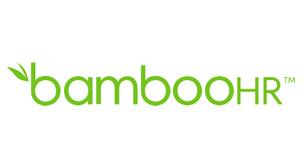
And while the growing recognition of DEI is certainly worth celebrating, there’s still a lot of work leaders need to do to make an impact, starting with how they communicate about DEI to the rest of the organization.
Most importantly, communication about DEI can’t be a top-down mandate. “A key to success is connecting with people across your organization,” writes Claude Werder, senior vice president and principal HCM analyst at Brandon Hall Group, “And making the evolution of [DEI] the shared responsibility of everyone.”
According to data from Brandon Hall Group, “high-performing organizations take a holistic approach that includes establishing trust,” and among other recommendations, this approach requires:
STATE OF THE INDUSTRY RESEARCH42 ARTICLE
Creating a work environment where everyone’s unique attributes are valued, respected, understood, and used “Transparent and inclusive communication” about DEI
As organizations the world over put DEI initiatives in place, everyone needs to work together to make DEI an active, living part of the workplace. Setting a precedent for inclusive communication is an important piece of this process, and it’s a responsibility that will likely land on HR. However, you’ll need different skills from other types of employee communications to successfully communicate with inclusivity.
How to Effectively Communicate with Inclusivity
Communicating with Inclusivity Requires Key Skills
When it comes to DEI, HR is often tasked with doing double duty: spearheading both the company’s initiatives as well as internal awareness and action campaigns. But there’s a difference between more routine employee communications and those internal communications.
● Employee communications boil down to what’s directly related to human resource functions, like career planning, benefits information, employment policies, etc.
● Internal communications are much broader in scope, and need to win over everyone in the organization, from the highest ranking executive to the newest hire. Other than DEI initiatives, examples include mission statements and branding strategy.
Employee communications focus on getting employees to act: sign up for benefits, follow the
organization’s handbook, set career goals, etc. But achieving the goals of internal communications is a more complex burden that involves convincing an entire organization to think a certain way or—even more challenging—to change their minds.
Because of this added difficulty, Managing Director and Chief Marketing Officer at CFA Institute Michael Collins writes that successful internal communications relies on “a precise skill-set” that includes:
● Careful and empathic listening
● Clear and concise writing
● Oral and visual communications expertise
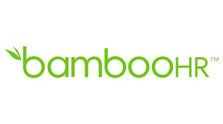
● Intellectual and emotional agility
● The ability to keep your personal opinions out of the stories you tell
“A consistent theme for building a successful, inclusive communication strategy is listening and inviting all voices into the conversation.”
Let’s dive into “listening with empathy,” and break it down to understand how this skill contributes to employee trust and helps you become a better communicator.
Inclusive Communication Is Two-Way Communication
Listening with Empathy Builds Trust
When you listen to your employees with empathy, you imagine how everything you’re saying will be received by the different demographics represented in your workforce, and you also invite all voices into the conversation.
STATE OF THE INDUSTRY RESEARCH43 ARTICLE
As SHRM puts it in their guide on managing organizational communication, “two-way communication plays an essential role in a comprehensive communication strategy. Listening to employee issues and concerns builds loyalty and drives improved productivity.”
While this may feel counterintuitive to organizations with more rigid hierarchical structures, you won’t be able to change anyone’s mind or get them to buy into your DEI initiatives if you don’t build trust and show them that you do, in fact, care deeply about being inclusive.
Listening Needs to be Paired with Action to be Impactful
Listening with empathy is only the first step to building trust. To guarantee trust, you need to couple listening with action. There’s no quicker way to lose employee trust and fan the flames of resentment than to ask for employee input and not act on it.
So whether you gather employee feedback from town hall meetings, surveys, or one-on-ones, you need to take action by discussing the feedback you received during company-wide meetings, by actually making changes, and by explaining your

decisions to employees (especially if you decide not to make changes in certain areas).
Empathy Helps You Communicate Better
As we mentioned, communicating with inclusivity bears the weight of two different goals:
● Communicating your organization’s DEI commitment and strategy
● Communicating in a way that makes everyone feel welcome, included, and supported
In other words, your communication is both the message and the medium. When you take into account how people with diverse perspectives will receive that message and incorporate an inclusive voice, you reassure employees on two fronts:

● You really have been listening.
● You understand and value who they are as individuals, not just as a collective.
In order to deliver communication about DEI in an inclusive voice, you need to educate yourself on the biases you may be susceptible to and practice those empathic listening skills.
Marie-Reine Pugh is focused on making HR simpler for HR professionals and workplaces a better place for everyone. She pulls from her previous experiences as an educator and six years of writing and researching to explore how to create inclusive company cultures that help businesses succeed.
Would you like to comment?

STATE OF THE INDUSTRY RESEARCH44 ARTICLE

Top 5 DEI Challenges in the Workplace
Katie Coleman, Circa
Diversity, equity, and inclusion (DEI) have the power to transform business by creating a truly inclusive workplace culture — which, in turn, drives employee satisfaction and retention. In fact, 80% of candidates say they prioritize inclusion and want to feel like they belong.
Implementing a DEI strategy is often a priority for businesses in a world where differentiation is

key, but many find they run into certain challenges that can complicate the process or keep it at a standstill.
Knowing where to start and how to embed DEI into company culture long term can be confusing, but it doesn’t have to be. Becoming familiar with these top challenges can provide clarity on why a strategy may be stalling and how to allocate efforts differently to address those challenges.
STATE OF THE INDUSTRY RESEARCH46
ARTICLE
1. Limited Budget and Inexperienced Staff
Many companies believe that DEI is a one-person role or does not need to be a shared responsibility, and as a result they don’t dedicate enough of their budget to it. On the contrary, DEI should be monitored and executed across the entire organization. It is often viewed as a function of HR only, but it should have a prioritized place in every department.
This may seem like a large undertaking because the concept of DEI is rather new, and a lack of understanding can make it difficult to tackle the strategy company-wide. Businesses can tie their DEI strategy to key business initiatives to strengthen the support.
2. Knowing What to Measure and Relevant Benchmarks for Comparison
Businesses often get bogged down in numbers because of the extensive amount of stats that can be gathered. They often don’t know which are the “right” metrics to measure DEI success. There are two ways to approach this: quantitative and qualitative data.
● Quantitative data measures things like improvement in the rate and time of promotion of diverse hires, increases in the diversity mix of supervisory and leadership positions, reduction of discrimination grievances, reduction of turnover of diverse hires, and a higher level of productivity and innovation.
● Qualitative data measures changes such as improvement in employee attitudes and job satisfaction, an increase in employee

engagement and participation, and an increase in employee comfortability with sharing opinions and ideas.
It’s also important to assess the big picture when it comes to metrics — for example, a 5% increase in diverse hires may not ultimately impact diversity levels if the company’s goals for total new hires in the same timeframe is parallel in growth.
3. Knowing How Employees Feel about Culture on an Ongoing Basis
Most companies forget that one of the most important things to do is get the entire company involved, not just management or leadership. It’s critical to know how DEI efforts are impacting every employee at every level. Companies can accomplish this by conducting listening sessions or developing surveys to identify how employees truly feel about the company culture. These sessions should not be a one-time thing either it companies should look to conduct them annually. Is there something the company could improve on or something holding people back? Does everyone feel like they’re bringing their real authentic selves to work?
4. Sharing DEI Initiatives and Resources Across the Organization
DEI initiatives and resources can be challenging to address whether in-person or remote, but it is important to stay consistent. Simply “implementing” DEI and letting it fall off the radar shortly after will not achieve true change in inclusivity and diversity practices. Companies should regularly educate the organization on their biases and how they can actively participate in DEI with strategic resources.
STATE OF THE INDUSTRY RESEARCH47 ARTICLE
DEI strategies should also cover all the bases — if the goal is to celebrate multiple holidays or different traditions across the organization, it’s important to ensure no groups are being forgotten.
5. Knowing How to Sell the Business Case for DEI Internally
Selling the business case for DEI can be tricky — for it to be successful, all members of the organization must be invested and recognize the importance of diversity in the workplace. Some strategies for fostering this involvement include (but are not limited to):

● Developing an onboarding and new employee orientation process with DEI in mind
● Providing career development planning for all employees

● Implementing a reward and recognition program to increase engagement
● Holding managers accountable for retaining high performing diverse teams
● Enhancing benefits and perks to attract a diverse workforce.
Looking at the Big Picture
Of course, DEI is not limited to best practices within the workplace and the employee experience. Other important areas of consideration include recruitment and talent acquisition, training and development, customer and employer branding, community investment, and supplier diversity. All these segments require similar efforts to be successful and are each just as important as the last.
If you’d like to learn more about DEI in the workplace or need help implementing the right strategies, we have an experienced team ready to help. Reach out to us here or check out our other resources for more helpful information.
Katie Coleman is Product Marketing Manager at Circa. She works to produce webinars and write articles on diversity and other employment-related topics to guide employers, employees and job seekers in their professional endeavors.
Would you like to comment?

STATE OF THE INDUSTRY RESEARCH48 ARTICLE
The High-Impact DEI Actions that Matter
Culture Amp

As companies recognize the importance and urgency of advancing diversity, equity, and inclusion (DEI), they face a new challenge – determining the best approach. While many companies made racial justice commitments in the summer of 2020, few companies have gone beyond small investments to take the high-impact, meaningful actions that actually push the needle on DEI.
The need for DEI progress has never been greater: the workforce of the future is more diverse than ever, and the next generation of talent heavily prioritizes company values in their employment decisions. From existing employees to job candidates and even customers, people are looking to invest their time, labor, and money into ethical, socially conscious businesses. In that sense, putting DEI first isn’t just the right thing to do – it’s the smart thing as an organization, especially with the Great Resignation still in full swing.
So, the question becomes: What actions can companies take to achieve effective and measurable change?
Culture Amp’s latest Workplace DEI report, Understanding the DEI Landscape reveals how companies can maximize their DEI investments to drive true, structural change. By collecting data and crunching the numbers from hundreds
of companies globally, Culture Amp’s People
Scientists uncovered which DEI initiatives make an impact and which ones don’t.
The Benefits of DEI in the Workplace
While business outcomes should never be your main reason for investing in DEI, quantifiable outcomes are helpful for gaining leadership buy-in for strategic initiatives. A focus on DEI has proven to drive tremendous benefits to almost every part of a company.
For example, diverse workplaces experience a host of benefits including:
● New perspectives Hiring people from diverse backgrounds, nationalities, and cultures brings a fresh array of insights and ideas to the table.
● Wider talent pool. Diverse companies are more likely to attract the best talent, with a 2020 Glassdoor study finding that 76% of employees and job seekers consider a diverse workforce an important factor when evaluating companies and job offers.
● Better employee performance. When you create a work environment where employees see a representation of a variety of cultures, backgrounds, and ways of thinking, they’re more likely to feel comfortable being themselves. This, in turn, leads to happier, more productive employees.
STATE OF THE INDUSTRY RESEARCH49
ARTICLE
Fortunately, it appears that the majority of companies already recognize the importance of strategic DEI. Culture Amp’s People Scientists found that 81% of respondents believe that DEI initiatives are beneficial to their organizations.
The business case for investing in DEI is clear, but what actions can companies take to unlock the benefits of a diverse, equitable, and inclusive workplace?
DEI Initiatives that Make the Greatest Impact
In the report, Culture Amp’s People Scientists leveraged two types of analyses to evaluate the success of certain DEI actions. Comparing what DEI practitioners reported they were doing with how their employees reported they were feeling offered insights on which initiatives are the greatest drivers of diversity, equity, and inclusion
Diversity
Diversity refers to the range of human differences that make each person unique, such as race, gender, and socioeconomic background. When it comes to DEI, diversity refers not to individuals (i.e.., “a diverse person”), but to the composition of teams and organizations (i.e., “a diverse company”).
Increasing representation is a key goal of DEI. It demonstrates to employees that the organization genuinely prioritizes having a diverse workforce.
Culture Amp’s study found that the greatest drivers of a more diverse workforce are:

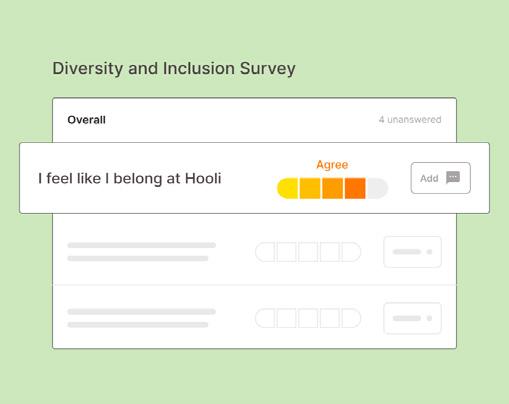
● Having a diversity policy
● Implementing a strategic DEI plan
● Using DEI data to make decisions
Though these activities are necessary for almost every other type of organizational priority as well, the research showed that less than half (49%) of companies have a strategic diversity plan and only 34% share data with all department leaders.
This is problematic, because in order to make progress on representation, companies need to collect data on the demographics and experience of their workforce and use it transparently to help drive leader awareness and action.
However, it’s not surprising that so few organizations are collecting data, as the research also shows that only 40% of organizations are conducting DEI-specific surveys (as opposed to a general engagement survey with Inclusion questions). This low number speaks to the broader deficit of data collection for companies pursuing DEI, but the problem is relatively easy to remedy. If your company falls into this category, jumpstart your DEI progress with a DEI survey.
STATE OF THE INDUSTRY RESEARCH50 ARTICLE
Inclusion
Inclusion is the act of making a person part of a group or collective so that each member feels valued and is afforded the same rights and

opportunities. Differences exist, even in diverse workplaces. Inclusion honors those differences while involving everyone, from team members to end-users, in policies, processes, physical spaces, products, and more.

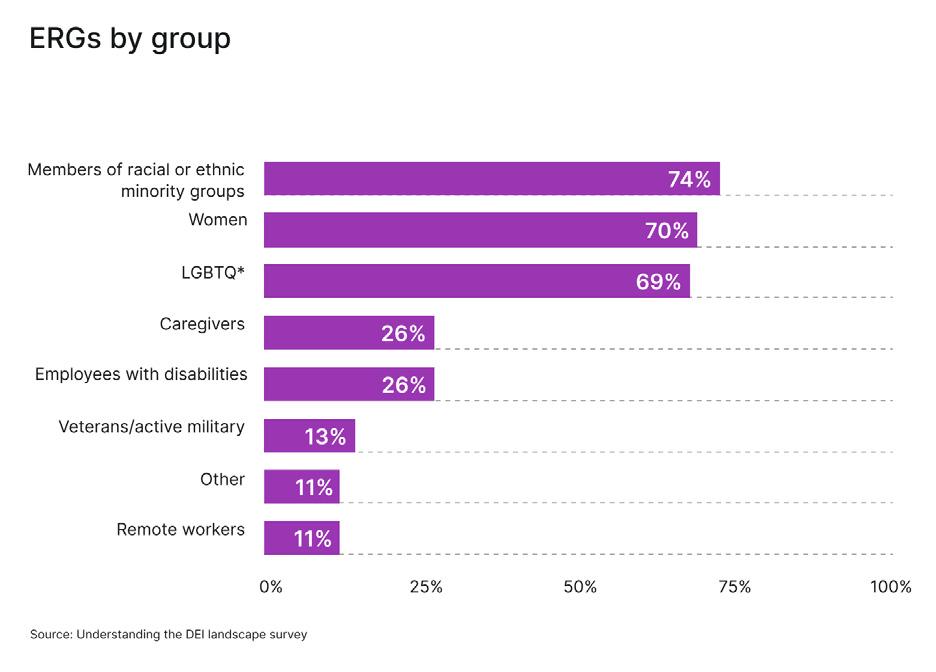
STATE OF THE INDUSTRY RESEARCH51 ARTICLE
While some companies have launched efforts to foster inclusion in the workplace, the data shows that more can and still needs to be done. For example, half (48%) of organizations Culture Amp surveyed have at least one employee resource group (ERG). Findings show these groups are most often centered on identities like race/ethnicity, gender identity, and LGBTQIA* status.
Employee resource groups are a powerful contributor to inclusion, as they help build community and foster psychological safety for employees. Additionally, ERGs are often responsible for leading (or participating in)
DEI-focused discussions and DEI events – two of the most impactful initiatives for driving inclusion.
However, ERGs can also deepen structural inequality instead of solving it – especially if your ERG leaders are doing ERG work without pay and on their second shift. As a matter of fact, research shows that only about 5% of companies compensate ERG leaders, despite the very tangible benefits their work brings to the organization. To ensure that your inclusion efforts are driving change in an equitable way, prioritize paying your ERG leads.
Equity
Equity is the process of recognizing that advantages and barriers exist that create unequal starting places and addressing and mitigating that imbalance. The concept of equity acknowledges that everyone has different needs, experiences, and opportunities. Instead of treating everyone as if they’re exactly the same, equity is about giving people what they need as individuals.
IBuilding, a diverse and inclusive workplace starts with fair and equitable processes. Culture Amp’s People

Scientists found that improving the transparency and consistency of core organizational processes is the best way to drive equity. The following initiatives are particularly effective at driving equitable outcomes:
● Implementing employee recognition programs
● Having formal mentorship or sponsorship programs
● Creating clear advancement processes
Greater investment in these areas helps companies develop a more equitable work environment. For instance, formal mentorship or sponsorship programs are helpful because they often provide greater transparency around the criteria and process for advancement.
Take a Data-Backed Approach to DEI
If your company is serious about advancing its DEI efforts, now is the time to take actions that will drive real, structural change. By focusing on initiatives that have proven to be successful, you can ensure that your investments will help your organization make measurable progress on diversity, equity, and inclusion.
The 2022 Workplace DEI Report shines a databacked light on current DEI trends, providing valuable insights. It identifies where to deploy resources for the greatest impact and reveals which initiatives drive certain components of diversity, equity, and inclusion. Read the full report to explore how you can progress in your journey to building a better world of work for all.
Would you like to comment?
STATE OF THE INDUSTRY RESEARCH52 ARTICLE
retention, right now
The Great Resignation is already underway, but extreme turnover doesn’t have to be inevitable. Here are 5 actions you can immediately take to improve retention in the long run.
now
transparent
ways tohelp retention(right now)

By now, most organizations have grown accustomed to new modes of working. The pandemic’s effects on the workplace have created a collective sense of burnout among employees as their personal lives became increasingly intertwined with their professional environment. As a result, there are still many unanswered questions on how employees can bring their authentic selves to work given this new and constantly changing environment.
Transparency is essential to building a solid culture and nurturing trust. However, people leaders often find it challenging to find a balance between healthy transparency and oversharing. Exploring ambiguity doesn’t have to be daunting, though. Whether it stems from decisions that impact your whole organization or personal challenges that affect your day-today, ambiguity is a very human reality that is generally best addressed by putting honesty and transparency at the forefront.
Take it from Trav J. Walkowski, Ph.D., SHRM-SCP, Parter &
“It’s important to build trust with your people through honest and transparent communication. While some things have to be kept confidential, these should only be things that do not impact a large number of people in your organization. Trust your employees first so they can learn to trust the organization, not the other way around.”
5 ways to help
The Employee Experience Platform cultureamp.com
retention 1
Tip 1: Be
5
FIG 1. EMPLOYEE AT WORK Improve__________
Download
Best Practices for Successful Outbound Recruiting
Kunwar Ishan Sharma, hireEZ
By now, you should have heard the buzz surrounding outbound recruiting

In short, outbound recruiting represents a proactive approach to recruitment that empowers talent professionals to connect organizations with their most valuable asset: people.
With the concept established, let’s get to the burning question — how is it done?
To make this “outbound recruiting how-to” as simple as possible (and keep proactivity top-ofmind), we came up with an easy-to-remember acronym: A.C.T.I.V.E.
It
Ready to become a pro at A.C.T.I.V.E.? Let’s get started.
Assess Your Needs
This step is not just about determining your needs for open roles. It’s also about considering the resources available to your team, the larger goals of your organization, and the viability of existing processes to make hires.
Here’s one key area to consider when assessing your needs:
Organizational Assessment: Make sure to have a conversation with organizational leaders to understand how new hires should be impacting the organization.
For instance, many organizations are making a more significant effort to address and close diversity gaps. If that’s the case at your organization, talent teams should work with HR and organizational leaders to understand where those gaps exist and how recruiters can do their part by finding talent to close them.
Consider The Market
It’s one thing to establish personas for open roles and hope that there’s talent in the market that fits them. It’s another to have complete visibility into the talent market to see how those personas align with those available.
STATE OF THE INDUSTRY RESEARCH54
stands for… ● Assess Your Needs ● Consider The Market ● Target Talent ● Individualize Engagement ● Value the Experience ● Evaluate Progress and Share Success
ARTICLE
Take the time to understand what the talent market looks like based on your open job criteria, since this might inform necessary tweaks that will make a major difference in the size of your available talent pool.
One area to consider is remote roles.
Try different locations during research to see where the most talent exists for your industry, skill sets, and beyond.
Target Talent
At the start of 2021, building a list of qualified talent via sourcing took 60% of talent professionals over 10 hours each week. That time could be much better utilized in improving the candidate experience, crafting personalized engagement, and more.
The solution to cutting down the time it takes to find qualified talent is investing in a tool that’s proven itself to do just that.
This tool needs to exponentially expand your available talent pool to give you the best chance at finding the most qualified talent. In short, long gone are the days of searching on just one platform, like LinkedIn.
Here is one example of how teams can utilize hireEZ’s EZ Sourcing with over 750M+ candidates across 45+ platforms.
Diversity Searches
If you’re looking for talent and hoping that they both qualify and contribute to organizational diversity, you have the wrong approach.
As you look for qualified talent, it’s important to have search capabilities that highlight the talent you need to address diversity gaps and strengthen a culture of inclusion.
These capabilities include:
● Underrepresented search filters
● Blind sourcing
● Keywords that go beyond underrepresented ethnic minorities and target those with neurodiverse backgrounds, LGBTQ+ affiliation, etc…

Individualize Engagement
Successful candidate engagement is about identifying what’s important to talent and using that as the building block to meet their needs and build a relationship.
STATE OF THE INDUSTRY RESEARCH55 ARTICLE
In an evolving world of digitization, there are more ways to reach talent than ever before. hireEZ provides those other avenues with an industry-leading contact information finder, including social media profiles, work/personal emails, and phone numbers. Find out how a candidate prefers to communicate and speak to them where other companies are not.
On the topic of looking where other companies are not, try to think of different ways to proactively reach talent.
This might include:
● Reaching out to university alumni groups or college career centers to find fresh/Gen Z talent entering the workforce
● Find community groups that you can message and collaborate with (Veteran hiring groups, etc…)

Value the Experience
In a candidate-driven market, the candidate experience is more crucial than ever before. What many fail to realize is that the experience should do more than seamlessly transition candidates from one stage of the recruitment process to the next. It should also be a reflection of your company’s culture and willingness to meet a candidate’s needs for successful employment.
Here are some areas to consider when strengthening your candidate experience:
Internal Team Communication: When we surveyed over 600 talent professionals in December 2021, internal communication ranked as the second biggest obstacle to an effective candidate experience.
To prevent these disruptions, teams should have a centralized location for:
● Candidate notes where information about a candidate can be easily accessible and organized
● Clear communication channels beyond email for expedited discourse (i.e. Slack, Microsoft Teams)
It’s important to establish communication expectations so the entire team knows how to communicate efficiently and keep track of information that’s needed to assess and secure talent in your pipeline.
External Communication with Talent: Similar to internal communication, clear conversations and expectations should be set with candidates. 69% of candidates want employer response time improved, and part of this is attributed to talent teams not being upfront about the length of time a process will take.
With that in mind, keep candidates looped into the process and updated as to when they should expect responses.
For instance, as a candidate makes it through each round of an interview, ask them:
● How they’re doing
● If their expectations are being met
● If there’s any way you can help them
You don’t want to lose a good candidate that’s already making their way through your pipeline just because you didn’t check in on them.
STATE OF THE INDUSTRY RESEARCH56 ARTICLE
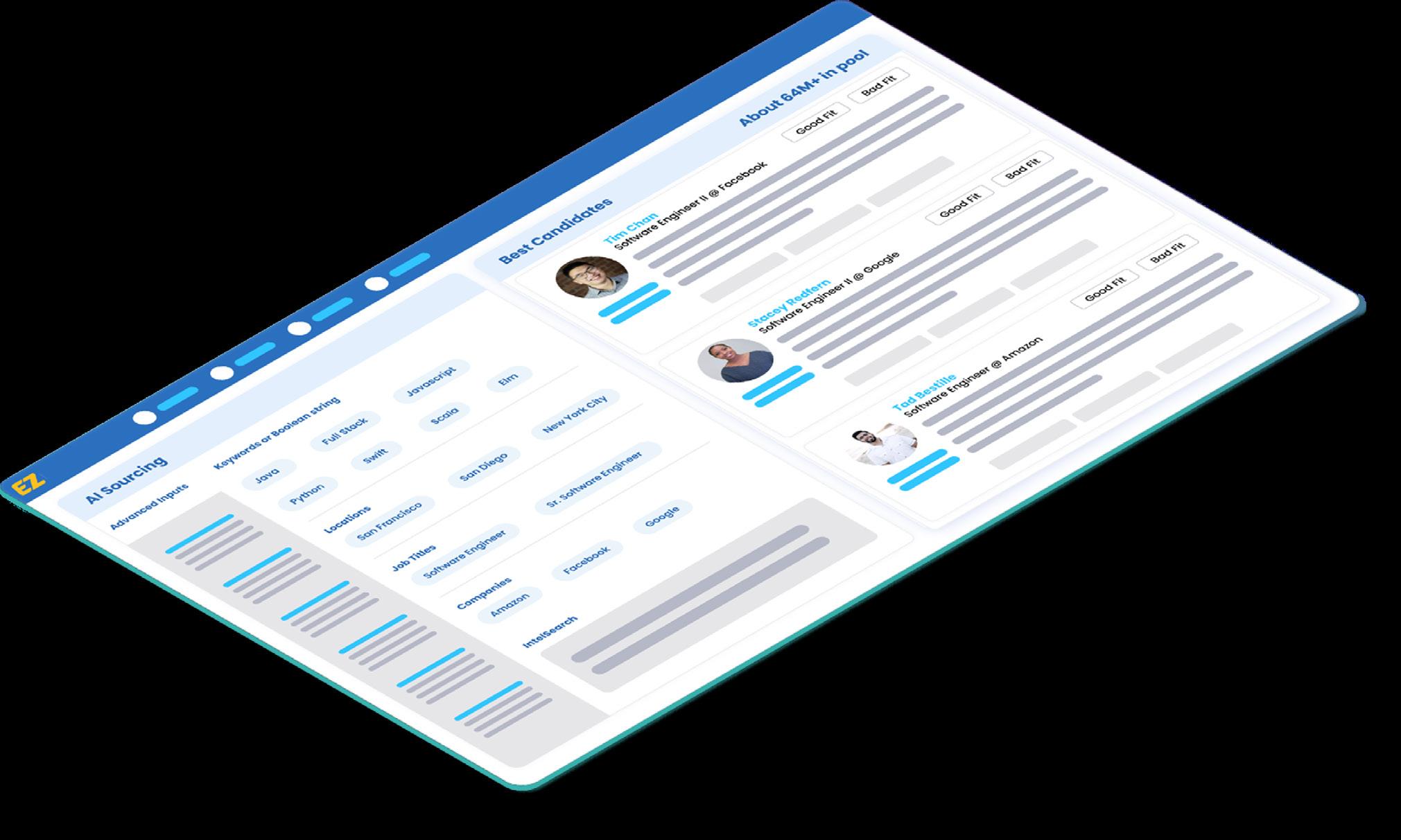









Evaluate Progress and Share Success
For each step of the process above, analytics needs to be available to see how you and the team are performing.
With hireEZ, these metrics are automatically available to be shared with your team, including




● How many candidates team members are uncovering, qualifying, and contacting

● How quickly talent is moving through stages of the talent pipeline
● What the response rates look like for each individual team member
Not only will this make it easier to track progress and remain motivated by each other’s success, but it will let your team leaders know that your outbound recruitment efforts are garnering results.


Would you like to comment?

STATE OF THE INDUSTRY RESEARCH58 ARTICLE
Kunwar Ishan Sharma is a Senior Content Writer in charge of content creation across hireEZ, including external articles, blogs, webinar content, video scripts, and eBooks.
Tips to Reduce Interviewer Bias
Alycia Damp, Hireguide

As humans, we encounter thousands of decisions every single day. Our minds have evolved over time to make these decisions more efficiently by using a strategy called ‘heuristics.’ You can think of heuristics as mental shortcuts. While heuristics make us more efficient problem solvers, they also make our decisions highly susceptible to bias.
Our biases prevent us from making decisions that are impartial and, well, unbiased. When it comes to hiring, reducing our biases is especially important because the decision to hire a candidate should be objective. We should be promoting processes that are fair. We should be hiring people who are the best fit for the role. Allowing our biases to influence our decisions undermines these objectives.
Making a conscious effort to remove our biases also ensures we give candidates a winning experience. Considering a recent report found that fairness was a key element of the candidate experience for over 1 million candidates, treating your candidates fairly and respectfully is nonnegotiable if you want to be competitive and secure top talent.
Fortunately, there are some simple actions you can take to help remove bias from your hiring process.
The first step is to recognize your biases. Drawing attention to your biases improves the quality of your decisions. The most common biases in hiring are:
● First Impressions and Confirmation Bias: The judgements we initially form about a person tend to have a lasting effect. This is because it’s easier for us to confirm our existing beliefs rather than changing them or forming new ones. So, if a candidate makes a strong first impression, any positive information we learn after becomes more salient. Similarly, if a candidate makes a weak first impression, negative information becomes more salient as they move through the interview process.
● The Halo & Horn Effects: Have you ever learned something positive about a candidate and assumed other positive things about them? Maybe they worked for a firm you highly respected and assumed they must be talented. This is the halo effect in action. It occurs when we let one positive attribute shape the rest of our perceptions about that person. The opposite is true for the Horn Effect. We let a negative attribute shape the rest of our perceptions about that person.
STATE OF THE INDUSTRY RESEARCH59
ARTICLE
● The similar-to-me effect: Humans have a tendency to gravitate towards others who they share similarities with. So, if you have a candidate in your pool who has similar interests to you, has a similar education as you, or has had a similar career trajectory as you, you’ll tend to favour them more than candidates who are different from you. Even if it doesn’t give you any information about how they will perform on the job.
● Stereotyping: We’re all familiar with stereotyping. It’s a tendency to generalize about people in a social category and ignore individual differences among them. Our assumptions about a social category come from our own lived experiences and our exposure to diversity growing up. Our beliefs lead us to assume everyone in a category possesses the same traits.


● Conformity bias: This is our tendency to be influenced by others as we form our perceptions about a candidate. Have you ever found yourself on an interview panel and were the only one who disagreed with your peers? Did you feel any social pressure to conform your opinions to those of others? The act of matching your beliefs and perceptions to the group is conformity bias at work.
The next step is incorporating some simple strategies that will help you make decisions that are bias-free.
● Suspend your judgments. At the beginning of the interview, resist the urge to make a yes or no decision about the candidate. Starting with a scripted list of questions can assist with this and prevent you from immediately concluding whether someone is strong or weak.
● Ground your decisions in job-related evidence. Be sure to gather all evidence about a person before you make a decision, and let the evidence guide your decision as you draw conclusions.
● Neutralize your bias with reverse logic. When people decide they instantly like someone, they tend to relax whereas when they decide they don’t, they get uptight. Try doing the opposite. Be more skeptical about those you immediately perceive as strong, and more relaxed about those you think are weak.
● Treat candidates as experts. Assume your candidate is a subject matter expert, much like you would a consultant, and give them the benefit of the doubt. This goes a long way in conveying your respect for them in the process.
● Give candidates a likeability score: To be more aware of your personal feelings about a candidate, give them a likeability score. Taking a moment at the end of the evaluation process to record this will help you control how your judgements influence your outcome and make you more aware of them in the future.
Using these practices helps keep fairness at the forefront of your hiring process. The result is not only a process that’s fair, but also one that helps you hire the best and the brightest candidates for your company.
Would you like to comment?
Alycia Damp is Head of Product Content & Selection Science at Hireguide.
STATE OF THE INDUSTRY RESEARCH60 ARTICLE
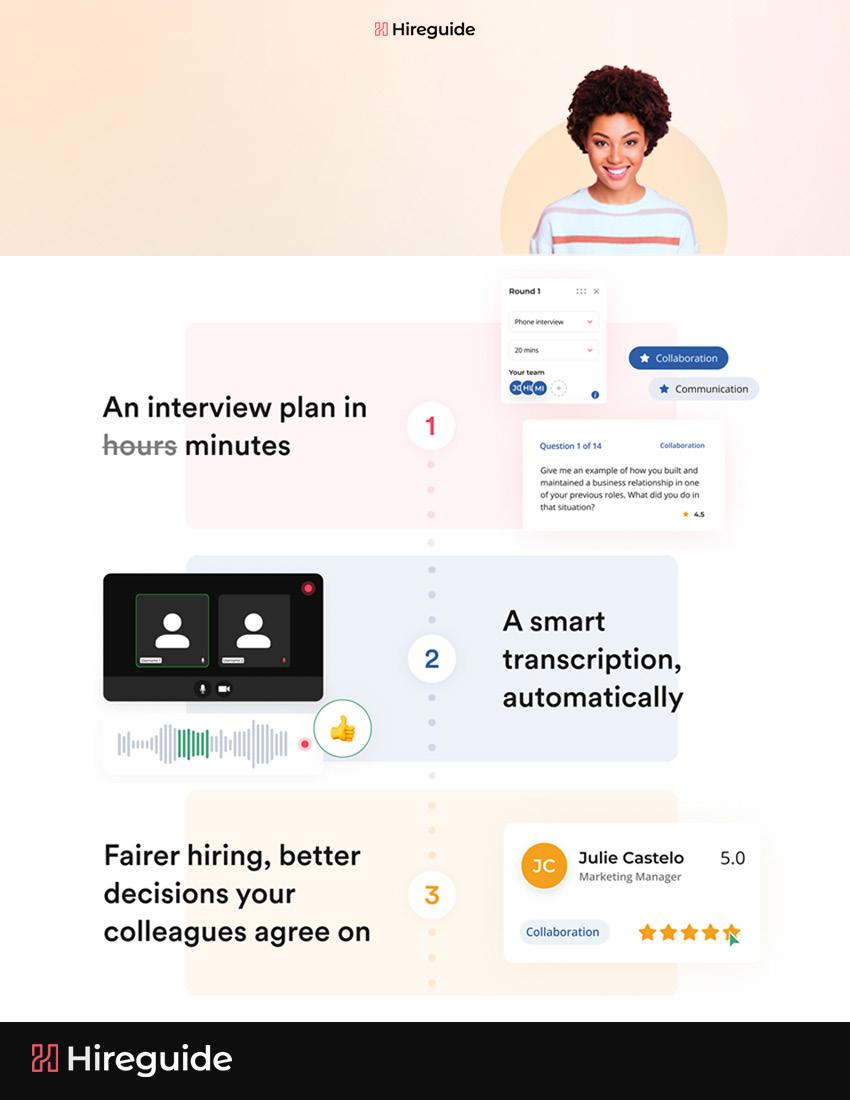

4 Steps for Incorporating Pay Equity into Your Company
Robert S. Sheen, Trusaic
Good employers know the importance of offering their workers a strong compensation package. But implementing an ongoing system to ensure all employees are fairly compensated can require holistic changes across an entire organization, leaving some employers unsure of where to start.
Fortunately, there are concrete steps employers can take now to make pay equity central to their business’ overarching compensation strategy. Below we have outlined four ways your organization can get started with incorporating pay equity.
Step 1: Conduct a Pay Equity Audit
Using a software solution to measure equity in your employee pay data is a great first step to incorporating pay equity into your company.
Be sure to conduct the pay equity audit proactively, and look for pay disparities across your workforce at the intersections of gender, race/ethnicity, age, disability and more.
To prepare your workforce data for the pay equity audit, your team should:
Review job descriptions to make sure they accurately detail the duties and responsibilities
of each job. This is critical for establishing pay analysis groupings (PAGs). Grouping employees together based on similar job functions is critical for understanding compensation equity within your organization.
Verify salary structure, pay grades, and bonus plans to ensure objective criteria are used that align with job categories.

Consider each employees’ experience, education, and level of responsibility. These bonafide factors, also known as legitimate business reasons, can legally explain the difference in compensation between employees who perform similar duties of work. Your organization may weigh these reasons differently, but they should be applied consistently across your workforce.
Take a close look at workforce representation and revisit assumptions about who fills different roles. This will help you resolve any disparities that can exclude some groups from higher-paying leadership roles. It’s important to assess the diversity makeup of your organization so you can better understand how compensation is being allocated. If you don’t have any female employees for instance in the C-suite, you may have a pay equity problem.
STATE OF THE INDUSTRY RESEARCH62
ARTICLE
After reviewing your workforce data, you will surely identify areas of weakness within your compensation structures. Document any changes that need to be made in your pay equity strategy and routinely check-in to ensure you’re making progress
Step 2: Make Pay Equity a Part of Your Work Culture
Your company culture should reflect your commitment to an equitable pay structure. From gaining leadership buy-in from the top down to communicating pay changes to affected employees, make pay equity a conversation at all levels of your organization. When your company is undergoing systematic changes to ensure everyone is paid fairly, it is important to share that information with all employees
Actively hosting a transparent environment is critical for achieving true pay equity. One way to enable workplace transparency is to create a formal plan for communicating your organization’s goals to achieve pay equity, both internally and to the public at large.
Your internal pay equity communications plan should outline:
Instructions for how to disclose sensitive pay information. Employee salaries and wages can be sensitive topics to talk about. Your communications plan should include how to talk about pay equity goals, progress updates, what kinds of equitable pay processes you currently have in place, what steps you’re taking to address disparities, and what employees can expect to see moving forward.
Communication scheduling. Be sure to factor in room for regular scheduled and unplanned messages to all internal stakeholders about the progress your organization is making towards achieving pay equity. Compensation is an important topic for most people, so it’s critical that you regularly provide status updates. You want everyone to feel comfortable about the progress you’re making, and actively communicating that will help.
Communication channels. You may be familiar with the expression, “it’s not what you say, but how you say it” and the delivery of sensitive information relating to pay is critical. When creating your communications plan for talking about pay equity, consider the different communication channels, such as email, intranet messaging, social media, bulletin boards, etc., you will leverage for certain messaging.
Crisis communication strategies It’s not something anyone wants, but crises do arise. If your organization finds itself in an unavoidable legal or otherwise public crisis relating to pay equity, you’re going to want to have a plan in place for minimizing lasting damages. Your pay equity communications plan should include actionable steps for resolving crises. The actionable steps should help restore brand confidence and trust to all key stakeholders.
Ownership and maintenance. Create a committee that holds departmental heads accountable for pay equity communications. Shared accountability is critical for many business functions and pay equity is no different. Your pay equity communications plan should clearly identify specific individuals,
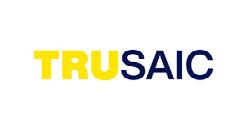
STATE OF THE INDUSTRY RESEARCH63 ARTICLE
what they’re responsible for, and how they are actively communicating progress in and outside of your organization.

Step 3: Learn from the Mistakes of Others
One way to learn about the consequences of inequitable pay structures is to look at the costly mistakes of other companies. Recently, entertainment company Riot Games settled a gender discrimination lawsuit at $100 million. Gaming giant Activision Blizzard was sued last year by the California Department of Fair Employment and Housing for systematic gender discrimination. Aside from steep monetary damages, these companies also took massive hits to their reputations.
While these companies are working to rectify past mistakes now, their errors show that a reactive approach to pay equity is best avoided.
Step 4: Enlist the Help of an Expert
If your organization doesn’t have the in-house capability to implement a plan and manage ongoing pay equity monitoring, consider partnering with a pay equity analytics and DEI monitoring solution provider, like Trusaic.

Our pay equity analytics and DEI monitoring solution, PayParity can help ensure you have the tools needed to achieve pay equity within your organization, from auditing software to developing plans for communicating progress with key stakeholders.
We’ve helped hundreds of companies achieve pay equity and can help you get started today. To learn more about PayParity, download the PayParity Difference Infographic
Robert S. Sheen is the CEO and Founder at Trusaic. With an extensive background in law, finance, tax, and regulatory consulting, Robert has built a career at the intersection of innovation and expertise. Robert founded First Capitol Consulting in 1999. Specializing in tax credits, data solutions, and quality of workplace, the company laid the groundwork for Trusaic’s eventual expansion into areas such as the Affordable Care Act and Pay Equity. In 2004, Robert founded US Metro Bank, an innovative disruptor in the field of mobile banking.
Would you like to comment?
STATE OF THE INDUSTRY RESEARCH64 ARTICLE
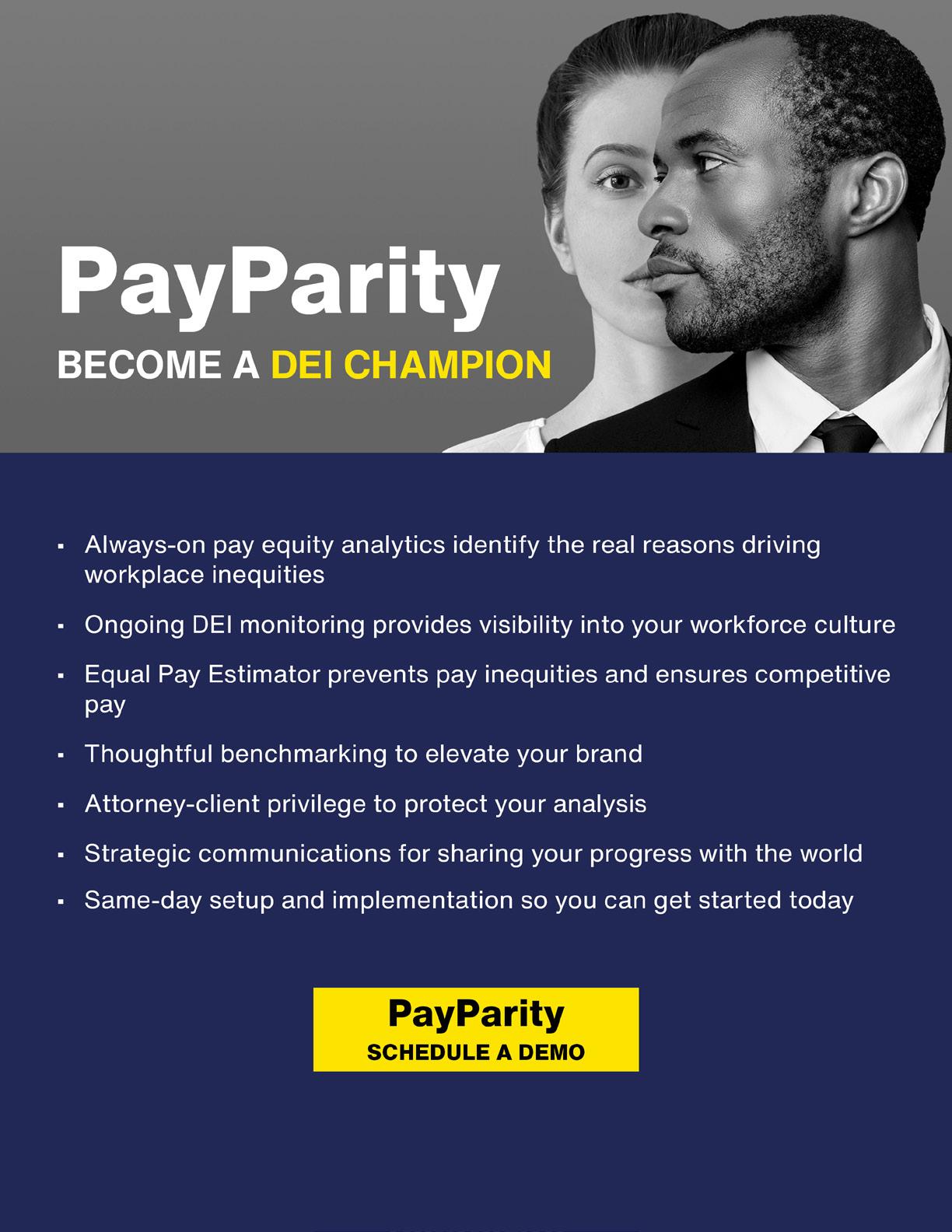
How the Golden State Warriors Use Momentive to Advance DEI Across Their Organization
Abigail Matsumoto, Momentive
To say that running Chase Center is a juggling act is an understatement. With 18,000 seats, the stadium hosts 200-plus events a year— everything from Golden State Warriors home games to rock shows.
Despite the frenetic pace of business, Chase Center’s management company (also called the Golden State Warriors), don’t let their values or their commitment to diversity, equity, and inclusion fall by the wayside. With the help of experience management and insights solutions by Momentive, they can easily prioritize DEI throughout their day-to-day operations, long-term strategies, and beyond.
“Diversity, equity, and inclusion is at the core of everything we do,” said Senior Vice President of People and Culture Erin Dangerfield. “It’s the lens through which we make a lot of decisions.” With data from Momentive driving those decisions, the Warriors can measure the success of internal and external DEI initiatives and identify new opportunities to create more inclusive experiences.
Centering DEI within the Employee Experience

Prior to the start of the Covid-19 pandemic, the Warriors used annual engagement surveys to connect with their workforce of more than 2,500 employees. This method resulted in feedback for a

STATE OF THE INDUSTRY RESEARCH66 ARTICLE
specific point in time, but Dangerfield and her team realized that they needed more employee feedback more frequently.
They began using Momentive to send monthly pulse surveys, which not only fueled their COVID-19 response, but enabled them to parse data by business unit, department, and demographics. Those latter metrics accelerated the Warriors’ DEI efforts by helping them get a deeper and more nuanced understanding of the employee experience within and outside of the pandemic’s unprecedented challenges.

“Using pulse surveys, we’re able to measure exactly how different groups experience their work and their roles here,” explained Dangerfield. “We can find out if work/life balance differs amongst different groups of people. We can find out if groups are more engaged, or how people feel about our benefit plans, or whether they feel like

their managers care about diversity, equity and inclusion.” With those results in hand, Dangerfield’s team were able to make targeted decisions geared toward those individuals or groups, ensuring no voice went unheard.
Collecting consistent, real-time DEI data also gave the Warriors a solid foundation to grow their initiatives. “Employee feedback has essentially become like a KPI for us as we continuously try to improve DEI within the Warriors,” said Charles Gao, senior manager of business strategy and analytics. “It’s a measuring stick that allows us to say objectively, do people agree or not that we are accomplishing this.”
In addition to fueling long-term DEI goals, pulse surveys helped the Warriors assess whether employees felt the organization was contributing in meaningful ways to the broader community, particularly when it came to important social justice
STATE OF THE INDUSTRY RESEARCH67 ARTICLE
issues. “One of the things that was really important to us was our response to the murder of George Floyd,” said Dangerfield. “We used pulse surveys to find out how our employees felt about our external diversity, equity and inclusion efforts, and to make sure we were aligning our internal messaging and employee engagement efforts with whatever we were doing externally.”
Those employee check-ins, Dangerfield believes, helped her HR team keep up with the evolving sentiment and needs of all employees. “We live in a rapidly changing world and a rapidly changing industry,” she said. “Having up-to-date information on what all our employees are experiencing is absolutely critical for us to engage with them and make good decisions.”
Shaping Better Customer Experiences with DEI Insights
With Momentive, the Warriors also discovered that there were opportunities to advance DEI in the customer experience—and that doing so would not only align with the company’s values but also the expectations of customers. For an organization invested in building experiences that resonate with fans, this was an especially important insight.
“Our customers can spend their money on a variety of different options to entertain themselves,” explained John Beaven, executive vice president of ticket sales and services. “So, it’s absolutely crucial for us to be tuned into what they want, what they expect, and be able to deliver on those high expectations.”
While using SurveyMonkey Audience to conduct market research on the in-game experience, the Warriors learned that fans wanted to see more diverse halftime performances. As a result, they
introduced new dance teams that included junior, senior, and co-ed squads. Both casual fans and the passionate Dub Nation were enthusiastic about the change—a bold move that the organization wouldn’t have made as quickly or confidently without supporting data from the Momentive platform.
“Understanding that our fans really care about diversity and inclusion being visible with our dance teams and how we present the game, that really helps us change the mold of the traditional dance teams that you might see across the industry,” said Gao. “It allowed us to customize the product to better fit the expectations of our consumers.”
For the Warriors, using Momentive products to collect feedback from fans, employees, and the market has been a win-win for their business and DEI commitments.
“DEI is a reflection of where the world is heading and we definitely see it as an important strength of our organization,” said Gao. “The ability to listen to that, both on the customer front as well the employee front, continues to empower us to get better and better.”
Interested in how Momentive can help your business take action on DEI insights? Learn more about our Workplace Equity IQ solution.

Abigail Mastumoto is a writer at Momentive focusing on technology, brand marketing, education technology, sustainability, consumer behavior, and more. Would you like to comment?

STATE OF THE INDUSTRY RESEARCH68 ARTICLE
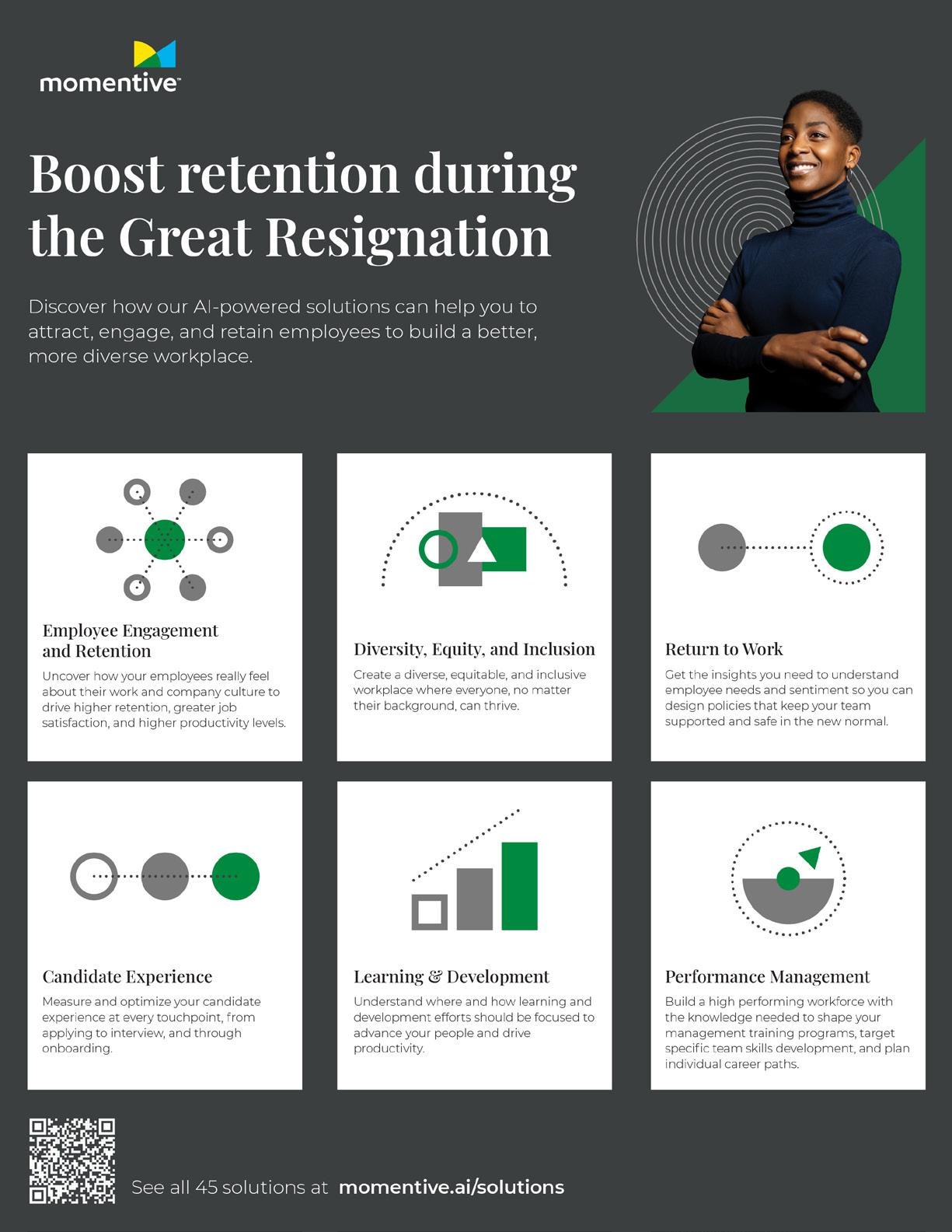
How Snap Inc. is future-proofing their family benefits program for a new world of work
Here are the key takeaways from a conversation between Rahab Hammad, Snap Inc.’s Senior Manager of Benefits and Karsten Vagner, Maven’s SVP of People
BY STEPHEN ELLIOT, MAVEN CLINIC
Although many of us are celebrating the easing of pandemic-related restrictions, HR leaders know that we’re not “returning” to normal—the events of the last two years have indelibly changed the way we work, live, and relate to one another. For people building and raising families, the pandemic brought a mental and physical healthcare crisis to a head that was decades in the making.
Snap Inc realized their employees and their families needed more support, especially as they prepare to enter the next new normal. Recently, Maven’s SVP of People, Karsten Vagner, sat down for a conversation with Rahab Hamad, the senior manager of benefits at Snap Inc., for a conversation about how family-building has changed, and how HR teams can keep up.
People are building families differently, and need support to match
People are starting families later and more people are exploring alternative ways to build their families
than ever before, including fertility treatments and adoption. Today, one in eight Americans is affected by infertility and three times more children are born via fertility treatments than a decade ago. More people are pursuing adoption as well, as a recent report found that 25% of American adults have considered adoption. 63% of same-sex couples planning families expect to use adoption or surrogacy services.
“Families are looking different and their needs are different. It’s a good time to start thinking about what supporting them looks like,” says Karsten Vagner, Maven’s SVP of People. “In order to stay competitive in this talent market, more and more employers are considering adding family building benefits.”
Health care for families is inadequate, expensive, and can lead to poor health outcomes
Although family building is changing, our healthcare system and our employee benefits are struggling to keep
A complete digital health solution for starting and raising healthy families


To find out how Maven can help modernize your company’s benefits package, request a demo at mavenclinic.com 24/7 access to personalized support when and where members need it Diverse providers who deliver inclusive, compassionate care Clinician-designed programs that improve health and well-being
up. Prenatal care guidelines haven’t changed since 1930 and 50% of U.S. counties lack obstetric services. All the while, treatments are only getting more expensive: fertility treatments can be cost-prohibitive for most— successful fertility treatment outcomes can cost up to $60,000, and many families can expect to pay above $5,000 out of pocket for pregnancies with insurance.
Employers are feeling this strain too, with a 50% increase in maternity costs in the past decade that now make up about 20% of employers’ overall healthcare costs. The pandemic has only further complicated the issue for working parents: with childcare and school closures, the majority of parents have had to change their childcare arrangements and don’t have permanent solutions. Working parents are at an increased risk for burnout, which can have devastating impacts on health and productivity.
Snap Inc. is offering aspiring parents and families more
Snap Inc. sought a partner who could help them align their benefits to their globally distributed employee population. “As our employees have families, we want to grow with them from a benefits perspective every step of the way,” explains Rahab Hammad, Snap Inc.’s Senior Manager of Benefits. Snap wanted innovative and user-friendly benefits that fit into their employees’ lives and offered meaningful support.
Snap Inc. needed a solution that addressed the gaps in family care like access to care, benefits navigation, and care coordination, as well as offering inclusive options like fertility treatments, surrogacy, and adoption. They introduced Maven’s digital family
health platform to help employees find and access the care they needed no matter where they were on their family-building journey. Maven checked all of their boxes — offering support for every path to parenthood, continuous care throughout the entire journey, and a vast network of on-demand providers available around the clock and around the world.
By offering an inclusive digital family health benefit, parents receive more support and better health outcomes
Through Maven, Snap Inc. employees have access to high-quality perinatal and postpartum care and personalized educational content for every moment of the parenting journey. Since launching the program, they’ve seen high rates of utilization from both men and women: 52% of employees using Maven identify as male, and 16% are outside of the U.S.
“The on-demand, global network is huge,” says Hammad. “Global parity is really important for us. Providing quality services that are available through the Maven network, it really just makes sense.” Maven is filling a critical need for families and expecting parents during a time full of stressful and intense life transitions. “[We’re never going] back to normal, we’re transitioning to a new lifestyle,” says Hammad. “We’re reimagining how we support all of our team members.”
“Global parity is really important for us. Providing quality services that are available through the Maven network, it really just makes sense.”
Ready to start providing world-class benefits for your employees? Request a demo today. Would you like to comment?
Best Practices for Crafting a Job Description that Attracts Diverse Candidates
With attracting diverse talent a top goal for many modern businesses, it’s wise to consider how changes to job descriptions could boost your efforts.

Luckily, there’s no need to reinvent the wheel here – there are some universal best practices that will help you attract diverse talent.
Let’s take a closer look.
Remove Gendered Language
The fastest way to eliminate half your audience is to use gendered language.
If you write “he” or “she” in your job description rather than “they,” you’ll inevitably put off people from the opposite gender.
If you’re making this error, it shouldn’t take long to clean up your listings. But are you making a more subtle mistake and using a gendered tone of voice?
Watch Your Tone of Voice
Another way companies impede inclusivity is to have a tone of voice that leans too much in one direction.
For example, if you use relatively aggressive language, you might put off those who don’t typically identify with that tone. If you say, “We are like a sports team looking for the next challenge,”
this creates a potentially polarized context that will put off some applicants.
Similarly, using intense and urgent language such as referring to your company as “a fast pace environment” will infer a lack of control. This will seem like there will be no time to train or get used to the role for many applicants.
You should also avoid phrases that candidates may interpret as patronizing. Job description clichés such as “All we ask of you is…” can be harmful as it downplays the ability of your potential employee.
Instead, keep your tone of voice more neutral. That’s not to say you can’t show some humor, charm, and a bit of your company’s brand – just keep it in a space that is welcoming to everyone.

STATE OF THE INDUSTRY RESEARCH73 ARTICLE
Replace Culture-Specific Content
If your job description includes things that people from some cultural backgrounds might not mesh with, you’ll want to get rid of this as well.
For example, consider how saying,’ We love to have a few drinks to celebrate wins!’ would not look appealing to applicants from particular religious backgrounds. Or, indeed, anyone who, for whatever reason, doesn’t drink alcohol.
State Your Inclusivity Principles
Perhaps the most straightforward way to show that you are open to diverse candidates is just to say it.
Keep it Straightforward
To attract neurodiverse candidates, it helps to write job descriptions that communicate the role in plain terms. Indeed, many large companies, such as Dell, have revised their recruitment initiatives to bring in more neurodiverse talent.
In practice, this looks like writing more literal roles. Don’t write phrases like: “We are looking for a marketing guru.” The word guru might slightly confuse or deter someone who is neurodiverse. Be specific and ensure clarity. Use neutral, recognized terms such as manager, assistant, or consultant. This will help applicants to understand whether they are suitable for the role.
This doesn’t need to be a particularly long part of the job description – just something that lets everyone know you’re open to candidates from any background and don’t discriminate. You want any potential applicant to feel that they would be welcomed and supported at your company. Some ways to do this might be:
● Explaining your company’s commitment to equality and diversity.
● Listing benefits an employee can expect, such as health insurance or flexible working.

● Stating that you care about supporting the physical, emotional, and financial wellbeing of your employees.
● Saying you encourage a strong work-life balance.
Here’s a guide on how to write these out, and for extra points, you can mention steps your business currently takes to celebrate diversity.
Adding some character and quirkiness to your job ads may seem appealing, but this shouldn’t make the details hard to understand.
Bolster Your Diversity Drive
Due to new technologies and factors such as the great resignation, there is more pressure than ever to get your approach to recruitment right.
Thankfully, attracting diverse candidates with better job listings doesn’t have to be strenuous. The practices we’ve listed are a great starting place. And, don’t forget – improving listings is just one of the many tools you can use to enhance diversity in your hiring.
Would you like to comment?
STATE OF THE INDUSTRY RESEARCH74 ARTICLE
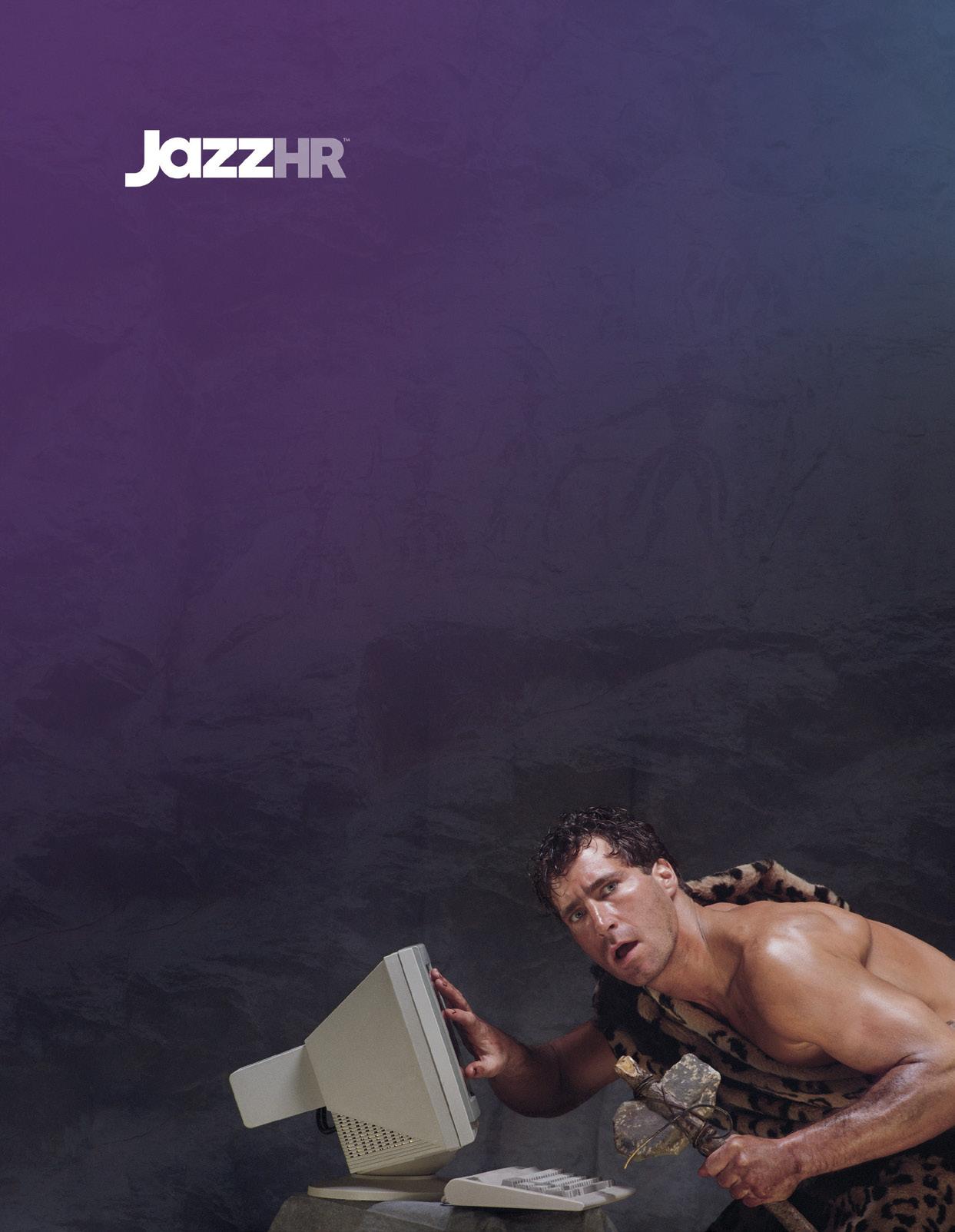

It’s so easy to use, a... (you get it) Budget-friendly hiring tools to build your best team: One-click job posting to the most popular job boards Free careers page to boost employer branding Integrations with top video interviewing, background check & assessment providers. Schedule a demo today! www.jazzhr.com Top-Rated Recruiting Software for SMBs
DEI at Work: 5 Best Practices and 3 Common Mistakes to Avoid
Kathleen O’Donnell, Bonusly

Increasing diversity, equity, and inclusion (DEI) in the workplace has become a higher priority for businesses today. And it is not just the right thing to do. Companies that prioritized diversity in their executive teams outperformed their less-diverse peers by more than 25-36%, according to research from McKinsey.
However, building DEI at work is about more than simply adding a new training program or a committee to your existing strategy. (Yes, unconscious bias training is important, but do not stop there)
Start on the right foot, or add on to your progress effectively, by learning the five best practices to build greater diversity, equity, and inclusion in your company. And it’s just as important to know what not to do too—this guide has all of that covered and more. Let’s dive in!
How to Build DEI at Work
The best time to start building DEI at work is right now—there is no time like the present. And with these five guidelines for creating an effective structure to build DEI, you can get to work today.
Meaning well and feeling concerned is good, but having a solid understanding of the current state, a plan to change it, and the commitment to meaningful change will take you a whole lot farther.
1. Know where you stand right now
You will not be able to significantly increase diversity, equity, and inclusion at your company unless you know where you stand at this moment. That means digging into the data—both qualitative and quantitative—to understand the current state of your employee experience.
This DEI data gathering should happen through the entire employee lifecycle, not only during exit interviews or short pulse surveys. It means asking the right questions during employee experience surveys, having ongoing conversations, and staying in collection mode so you can track your progress.
2. Create a plan and a leadership structure
Once you know exactly where your company stands in creating a diverse, equitable, and inclusive environment today, you will be ready to tackle the next phase—creating a plan to make tangible, significant improvements.
STATE OF THE INDUSTRY RESEARCH76
ARTICLE
Choosing a team to steer the strategy creation and execution is a great idea—people make plans happen. Ensure that the team is cross-functional to maximize your chances of success because no one department (not even HR) is solely responsible for creating a culture dedicated to diversity and inclusion.

Your plan could include elements like:
● A DEI charter to describe the purpose of the team’s work and what success looks like.
● Resources (both financial and otherwise) to support development activities, training, and events.
● A communication strategy to keep the organization informed on progress.
● Methods to gather employee feedback, like pulse surveys and DEI questions in your employee experience surveys.
● Metrics to measure your progress and ensure you’re progressing towards your goals.
Having a thoughtful, strategic plan, and sharing it widely with leaders and employees alike, makes it more likely you will achieve your targets. Committing to sharing progress with your whole organization means you will be held accountable for the results, and that builds trust in your company.
At Bonusly, we have established a DEI Advisory Group of over 20 individuals (that everyone is welcome to join) which meets twice a month and with executive leadership every two months.

The DEI Advisory Group collaborates to develop and fulfill the overall DEI strategy at Bonusly to ensure we are living out our company core value of “Seek and Embrace Diversity.” The strategy is shared with the entire company in our internal wiki.
A few ways the DEI Advisory Group has made an impact at Bonusly include:
● Making sure our product is accessible.
● Actively seeking and including diverse perspectives in our product user testing.
● Utilizing a consistent hiring process that minimizes bias
● Creating salary bands and a standardized performance review process.
● Involving diverse personas and examples in employee training and customer education.
● Ensuring our content includes diverse perspectives and illustrations.
● Celebrating cultural holidays and events
STATE OF THE INDUSTRY RESEARCH77 ARTICLE
3. Get leadership on board
Many companies assume that hiring a new DEI leader is enough to shift the organizational culture on its own—that’s one of the reasons why more than half of S&P 500 companies have a chief diversity officer. But those leaders often end up burned out or disillusioned within just a few years if the whole company is not truly on board with the commitment to DEI.
Hiring a chief diversity officer could be a great step for your company. But you must get your entire leadership on board with a commitment to DEI to see real progress. 50% of respondents to an SHRM study who worked at DEI-laggard companies say a lack of leadership commitment hinders their diversity, equity, and inclusion efforts, while just 5% of employees from DEI-leader companies say they have this issue.
Leaders can help create a diverse and inclusive culture, or they can be a major stumbling block. Work hard to get your existing ones on board, and be sure you’re increasing diversity in your executive leadership teams going forward—that will support increased representation, perspectives, creativity, and engagement (among many other benefits) throughout the rest of your org chart.
4. Overhaul your hiring process
Combating bias in your hiring process is essential to creating a sustainable future for your diversity and inclusion initiatives. By ensuring your new talent pipeline is full of employees who share your organization’s commitment to diversity, inclusion, and equity, you can keep your company pointed towards a brighter future.
Overhauling your hiring process to remove different forms of bias takes time, but it can be done— especially with the development of new hiring tools to remove areas where bias tends to creep in.
For example, you may consider using a different recruiting firm if your current one consistently delivers the same narrow candidate profile, or ensuring your hiring committees represent a diverse group of employees to yield better results.
5. Think long-term

Beginning a plan to increase DEI in your workplace is great, but this shouldn’t be a short-term trend. To make your DEI training and strategy effective, and trusted by your employees, you need to think longterm and commit to staying actively invested in DEI across your organization.
Workers who lose trust in their company’s DEI efforts are more than just disappointed—40% of them would consider leaving the organization altogether, and 56% would not recommend it as a place to work to their friends and family. That number is even higher for younger employees, senior management, and LGBTQIA+ employees.
Gallup’s Inclusion Index has identified trust as one of the three main elements of a truly inclusive culture, along with respect and appreciation of unique characteristics. Employees must be able to trust that your company is really, deeply committed to increasing diversity and inclusion for the long term, not just to receive external applause for shortterm steps today.
STATE OF THE INDUSTRY RESEARCH78 ARTICLE
DEI: 3 Common Mistakes to Avoid
Those five steps should help get you closer to a more diverse, inclusive, and equitable organization, no matter where you’re starting from. But it’s just as important to avoid these three common mistakes when implementing DEI at work.
1. Misplacement of the burden
For many organizations who decide they want to work on DEI in their workplace, the first step is too often asking employees that are most impacted by systemic inequity (people that are non-white, women, seniors, LGBTQIA+, immigrants, veterans, people with disabilities, and other groups that are made to feel like they don’t belong) to assume most of the burden in making a difference.
Including everyone in your company is, well, inclusive! But it’s also important to note that the people who are most likely to bear the brunt of discrimination at work shouldn’t be responsible for ending it by developing and leading training, planning events, or educating others. Part of DEI includes taking responsibility to educate ourselves about the systems that cause social injustice and take action as a result. You also need buyin, leadership, and allyship from employees and leaders who aren’t as personally affected but see the need for change and want to do the work to make it happen.
2. Being overly boastful
While it’s great that your business has made a commitment to increasing diversity and inclusion— and it’s truly never too late to begin!—it’s also not

something you need to shout from the rooftops every chance you get.
Being performative about your DEI efforts can backfire. Letting your results speak for themselves is much more effective—when you do it right, your employees and people in your community will notice and share their observations with others.
Plus, while a strong DEI strategy is a wonderful thing to have, it’s also considered a rather fundamental part of being a responsibly-run business these days. And since 45% of US workers have experienced discrimination or harassment at work in the last year, there’s still a whole lot of progress to be made.
Being proud of your efforts is great! But it also shouldn’t be considered going above and beyond in 2022 when you hire people that have been unfairly affected by deeply ingrained societal structures in more proportionate numbers and promote them to leadership. It’s simply how things should be.
3. Ignoring the small things
There’s a need to focus on the overarching strategic goals of your organization when you’re trying to build a more diverse, equitable, and inclusive culture. But the small things shouldn’t be missed either—they can also have a real impact on how employees feel about DEI at work.
For example, don’t ignore elements like celebrating the holidays inclusively in your workplace, or asking your leadership team to add their pronouns in their email signatures.
STATE OF THE INDUSTRY RESEARCH79 ARTICLE
Employee recognition programs like Bonusly can also be a small change with a significant impact. By enabling peer-to-peer recognition where anyone can visibly and timely recognize anyone else in the company, employee recognition fosters inclusive company culture

These might be small steps, but they can signal a shift in your workplace culture that helps everyone to feel safe and included. Aiming big is important, but don’t ignore the small details along the way.
Takeaway
Building a more diverse, equitable, and inclusive workplace is a great goal for any business, no matter where your company currently stands. It’s never too late to begin, and you’ll be surprised at how a small commitment can grow into some big changes.
But to make your DEI at work efforts effective and meaningful, you must work strategically and include the entire organization in this work, or it will become little more than a talking point in your annual report.
Looking for more tangible ways to improve DEI at your organization? Bonusly’s powerful employee recognition program helps create a sense of belonging, celebrates diverse contributions and perspectives, and reinforces a culture around shared values. Learn more today.

 Kathleen O’Donnell is a freelance writer. Would you like to comment?
Kathleen O’Donnell is a freelance writer. Would you like to comment?
STATE OF THE INDUSTRY RESEARCH80 ARTICLE
equity, and inclusion are top priorities for
modern







Diversity,
today's
businesses.
H o w c a n y o u m a k e a n i m p a c t ?
Specific, inclusive, and values based employee recognition is a good place to start. Bonusly’s powerful employee recognition program: helps create a sense of belonging celebrates diverse contributions and perspectives reinforces a culture around shared values learn more at bonus.ly
The 10 Biggest ERG Challenges (and How to Solve Them)
Chad Neufeld, Benevity
Today’s
workplace is evolving — people are searching for inclusive communities where everyone can connect, belong, thrive, learn and take action on what matters to them.
Employee resource groups (or ERGs) exist in 90% of Fortune 500 companies, according to a Bentley University report, and can bring employees with shared goals or life experiences closer together to create a culture of belonging. ERGs often help companies and their people inform their diversity, equity and inclusion (DEI) strategies and answer the questions, “Who do we want to be?” and “How do we get there?”
According to McKinsey & Company, 51% of people surveyed said they quit their jobs because they didn’t feel a sense of belonging at work. Harnessing the power of ERGs can help create that sense of belonging and result in a more united workplace with higher retention rates and more engaged employees. But these passionate groups often face common obstacles and need your organization’s support and resources to overcome these challenges and flourish.

The 10 Biggest Challenges
While ERGs have evolved from a side hustle of passionate volunteers to better-organized programs with budgets and incentives, they still face significant challenges to achieve their full potential and make an impact on company culture.
Here are 10 common problems:
1. ERG leads don’t have administrative support If your ERG leads are feeling overwhelmed, they’re not alone. While ERGs get credit for higher recruitment and retention levels, they often lack the day-to-day and administrative support they need to achieve those goals.
2. Your ERGs don’t have a central hub It’s hard to organize and mobilize when your groups don’t have a home. As a result, recruitment, discussion and action are fragmented across productivity tools, intranets and messaging platforms, leading to missed opportunities.
3. There’s no catalog to discover ERGs
Your employee resource groups can recruit more members if they have the right tools. Do your people know what ERGs are available to them? Do they know where to find them?
STATE OF THE INDUSTRY RESEARCH82 ARTICLE
4. ERG members aren’t engaged
It can be tough to keep ERG members engaged when there’s no centralized gathering place for them to participate in discussions, offer feedback and learn about events.
5. There’s little or no reporting
What are your ERG stats for participation, engagement and impact? Manually measuring and reporting means your ERGs lack the robust intelligence required to inform their program — or to show how it’s contributing to the company’s objectives and bottom line.
6. ERG members can’t access resources
Knowledge is power, especially where social justice issues are concerned. Many ERGs dedicated to DEI lack a central place to distribute, promote and host educational resources.
7. Event management is a mess
When ERG event management is scattered across email invites, group chats and thirdparty apps, members miss important context and opportunities for discussion. And ERG leaders are less able to consolidate feedback and gather data.
8. Leaders don’t have ERG-specific tools
Without proper administrative tools, ERG leaders must spend more time on day-today activities, leaving less time to focus on strategy. They struggle with the inefficiencies associated with communication tools and calendars that aren’t built for employee resource groups.
9. Employees don’t feel safe sharing
When your people don’t trust that your ERGs are safe spaces to speak without
repercussions, they don’t talk about the topics that are important to them, and you’re unable to identify the real issues.
10. ERG and CSR teams aren’t on the same page
Even when ERG, DEI and CSR or corporate social responsibility teams collaborate, they lack unified tools for participation, administration and reporting. This results in unidentified issues, unmet needs and unrealized opportunities for change.
How ERG Software Can Help

If you and your organization identify with the challenges detailed above, you’ll be happy to know there’s a solution. Adopting the right ERG software can alleviate these problems, bolster your company’s commitment to an ERG strategy and, ultimately, maximize your ERGs’ impact. The right software can:
Centralize your company’s ERGs For ERGs to create lasting cultural change, they need to build communities with strong foundations. It’s easier to build these communities when ERGs operate from a dedicated space that facilitates discovery and engagement.
Using that space, ERG leaders can access membership information, monitor participation, identify trending issues, spark discussion and organize events. Members will have a one-stop shop for “everything ERG,” where they can converse privately in a safe space and access educational resources.
STATE OF THE INDUSTRY RESEARCH83 ARTICLE
Adopt a purpose-built solution
Your sales team has customer relationship management technology. Your recruitment team has a talent management system. Your accounting team has specialized software. These solutions automate manual tasks, streamline workflows, manage users and provide reports. They’re all built for the needs of a specific business function. Purpose-built ERG software is designed to meet the specific needs of ERGs.

Report on ERG impact
By tracking ERG membership, participation, engagement and event attendance, you can better understand each group’s impact and how well they’re meeting their goals.
By having instant access to on-demand data, you can find insights on tangible metrics like recruitment, retention, promotions and diversity.

By correlating ERG data with CSR program participation, you can get powerful insights into how ERG participation affects giving and volunteering initiatives, informing adjustments to your broader CSR strategy.
Integrate with your CSR program
Progressive companies know that ERGs play an integral part in CSR strategy to increase employee engagement and social impact. So, it’s important that CSR programs align with a company’s DEI and ERG goals.
STATE OF THE INDUSTRY RESEARCH84 ARTICLE
The activity happening in your ERGs should inform employee engagement programs. This integration ensures that giving and volunteer opportunities resonate with your people, that DEI leadership training is focused on the right issues and that your company can recruit and retain more diverse talent.
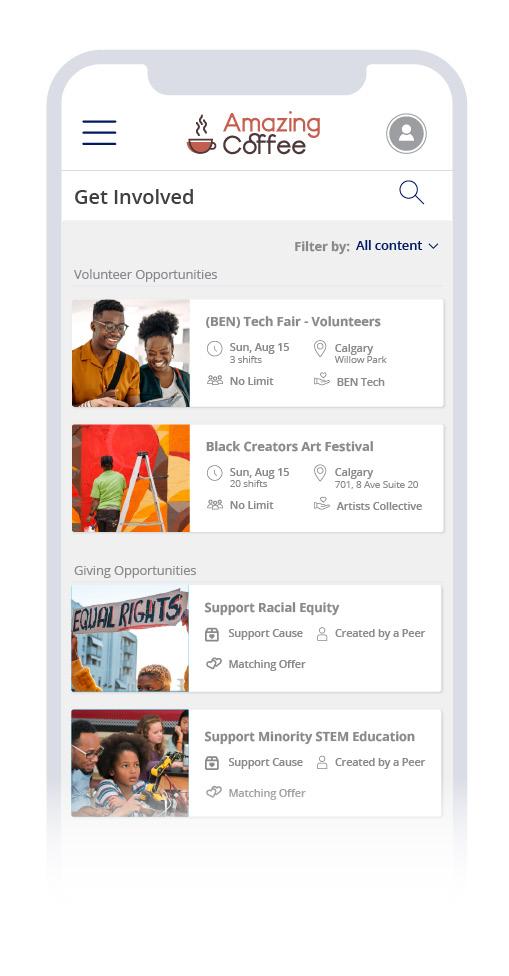

The logical connection between an ERG and a CSR program makes it possible to move beyond discussion into action to support the issues important to your people. The benefits are reciprocal, with each program inspired and driven by the other. It makes sense, then, for ERG and CSR software solutions to integrate seamlessly for maximum results.
ERGs and ERG Software Make Good Business Sense
From educating about racial equity to creating a sense of belonging for LGBTQ+ people to empowering women to become leaders, ERGs create a better company culture for everyone.

STATE OF THE INDUSTRY RESEARCH85 ARTICLE
So, whether you’re just starting to build your ERG strategy, leading an ERG in your workplace or managing those who do, you can use dedicated ERG software to increase efficiency and impact for your people, company, stakeholders and society as a whole.
With ERG-specific software, your ERGs can grow and scale their efforts, and your company can achieve key strategic goals from recruitment and retention to building a more diverse culture.
Benevity Affinity Groups is designed to support these broader business objectives while helping ERG leaders manage the day-to-day of creating communities of belonging where employees can


come together, learn and act on the issues that matter to them. Learn more at http://benevity.com/ affinitygroups.
Chad Neufeld is a part of the Product Team that brought Benevity’s ERG platform, Affinity Groups, to market. He has spent most of the last 5 years in the world of online communities, supporting DEI, HR and Marketing teams.
Would you like to comment?

STATE OF THE INDUSTRY RESEARCH86 ARTICLE





Blog Black Employee Network Pride Network Hispanic Network My groups Recent Groups, Activities, Topics... SearchMy feed All Groups My feed Quick Questions Yes, please! Do you want to hear more about ERG communities and how best to get involved in your groups? Valuable Volunteers Build a Culture of Belonging With Benevity Affinity Groups Our powerful ERG software brings together impact and inclusion to help your employees live their purpose at work. Learn More Welcome to your Employee Resource Group
Find Your Company’s DEI Anchor
When leaders are asked why an organization should prioritize diversity, equity and inclusion, you will often hear “because it’s the right thing to do.” It absolutely is, however, if your company’s DEI thinking does not go beyond that, then your diversity initiatives might not be powerful enough to create real change.


It is time to take the conversation further and deeper into what building an inclusive culture really means. How do we get beyond just conversations and start turning awareness into action?
Define Your DEI Anchor
“When it comes to diversity and inclusion, it is not something where you can fly in an expert for two hours, do a training, and then you are done,” said Tara Cooper, DEI consultant at OpenSesame.
True commitment to DEI takes time. To hone in on an effective DEI strategy, an initial step is to define what your DEI anchor is. A DEI anchor is a key area or mission that you wish to focus your organization’s time and resources on. It helps you to set priorities and align your goals.
STATE OF THE INDUSTRY RESEARCH88
ARTICLE
OpenSesame
Helping Improve Employee Engagement
One Course at a Time
Start your
Outcomes of a successful L&D strategy
retention and engagement
skill gaps
career paths at all levels

rogue spending
safety and productivity
OpenSesame helps develop the world’s most productive and admired workforces through powerful online learning in every industry. With the most comprehensive catalog of elearning courses from the world’s top publishers, OpenSesame helps global companies every step of the way. In a moment of an increasingly virtual workforce, OpenSesame has added even more Global 2000 companies to its customer base. With over 25,000+ courses, the platform touches all industries in all markets.

z Increase
z Decrease
z Provide
z Mitigate
z Improve
:
So, leaders should take some time to self-reflect at both the professional and personal levels.
What should be the DEI vision for your company?
Ensure You Have Support from Leadership
The responsibility of DEI can not fall on one person or a single consultant. To succeed, you need buy-in from leadership. What is happening at the bottom typically will not change if nothing is changing at the top. For companies that are serious about improving the experience of employees of color, executives need to take charge.

And it can not be a simple checklist. Leaders must decide how deep the organization is willing to go and what they are willing to invest in DEI. That will look different for each organization—it depends on where the company is in its DEI journey.
“If you’re wanting true transformational change, you’re using outside consultants, you’re taking those extra steps to ensure psychological safety and build that proper scaffolding,” Cooper said.
Read more about how a holistic approach can drive change in business culture
Foster Employee Engagement and Commitment
To increase awareness and sensitivity around DEI, companies need to successfully harness the energy and curiosity of their employees to drive momentum. Depending on where your workforce is, some conversations with employees might feel new or uncomfortable.

DEI should be a leadership directive. But, according to Cooper, it is crucial that individuals are doing the work at every level of the organization. She also stresses the importance of affinity groups, also known as employee resource groups, for workers of marginalized identities.
“If you need to have an affinity space to discuss the issues you need to discuss and build yourself up so you can be more productive in the workspace, then that’s what they need to be able to do.”
As the number of organizations launching DEI initiatives grows bigger, it is important that employees understand the part they play in DEI goals. Your “why” must delve below the surface and into a deeper exploration of what an inclusive space looks like and what it can do for your work culture.
Find out where your organization is on its DEI journey with our free DEI progress survey.
Would you like to comment?
STATE OF THE INDUSTRY RESEARCH90 ARTICLE
Strategic
Empathy
Catapulting Your Diversity, Equity, Inclusion & Belonging Initiatives


Growing up in Pune, India, I vividly remember the hot summer afternoons, the monsoon rains and that hand made catapult we used to “ access ” some incredibly juicy and sweet mangoes that grew on our neighbors' tree! As we scrambled to grab the targeted mangoes that had just landed on the ground, I still remember Mr. Thadani chasing us out of his backyard, threateningly waving his cricket bat We would jump on our modified Hero bicycles and scurry down the back alleyways our pockets stuffed with the delicious loot!

The catapult I used was a hand powered device made from a forked tree branch with an elastic band fastened to the two prongs used to hurl objects A good pinch, a strong pull, proper alignment along with a smooth release helped us become experts at hitting the target. Here's the thing with catapults: the more we pull the band towards our chest, the farther the rock goes Similarly in our Diversity, Equity, Inclusion, and Belonging efforts, the more we focus our efforts to look inwards as individuals and as an organization, the larger the external impact on our organizations.
According to a McKinsey report, it’s clear that more diverse companies are now outperforming less diverse companies on profitability Progress has surely been made since the social unrest of 2020, but not at the pace most of us wanted to see because the DEIB landscape is full of landmines, since most business leaders are struggling to commit to equitable and inclusive initiatives that support all employees needed before one can create a truly diverse workforce. This is where, I strongly believe, that empathy must be deployed as a strategy in the workplace

1EMPATHIFYU "The CFO who speaks Empathy & KPIs in the same sentence!" AJIT DODANI FOUNDER & EMPATHY STRATEGIST | EMPATHIFYU www empathifyu com ajit@empathifyu com @dodaniajit
Why Empathy?
The writing is clearly on the wall, people are showing up at the workplace with varied experiences that the past few years have had on their finances, relationships, physical and mental health.
This level of 'human variance' in our teams requires a new kind of leader, one who leads with EMPATHY!
Research is clearly showing that organizations that are embracing Empathy see an increase in engagement, innovation and revenue by inspiring a workplace culture that empowers thriving employees But there are still a LOT of leaders that choose not to Why? Because it was not part of the “traditional” leadership that was taught in their Ivy or ‘Not So Ivy’ schools, so they don’t even want to consider the pain of change and learn something new, it is easier to fall back to the “ same ol', same ol' traditional leadership formula!”
What I hear a lot of is rooted in fear Fear for traditional leaders looks like: “Will empathy make me a weak leader, a pushover, or a [enter self deprecating adjective here]?” Well I’m here to tell you that if that’s your opinion you ’ ve got the wrong kind of Empathy! What we talk about at EmpathifyU is developing a foundation of empathy in your organization, along with demanding four critical skills from ourselves and our teams: Accountability, Communication, Relationship Building & Problem Solving.
This allows us to inspire a team that delivers a high quality work product, values accountability, communicates clearly, has high level problem-solving skills, is surrounded by positive relationships, and equipped with knowledge that supports a thriving life all of this while keeping empathy at the core of all their decision making They are that radiant sunshine in the middle of the Venn diagram and at the center of our highly empathetic workplaces
So how does embracing an Empathy Strategy Catapult our Diversity, Equity, Inclusion & Belonging Initiatives?
For that I need to share with you some basics of what a deployment of an Empathy Strategy looks like in an organization. We start with the outcome at we are looking for: an organization where every member of the team understands the transformative power of this vision statement: "Once I know who I am, and I empathize and learn to respect who you are, we are able to respectfully sit at the same table, bringing our whole selves, to solve any problem that comes our way."
This seemingly obvious outcome that every organization should operate under looks simple, but as most of us know, is not easy! It requires us to take a deep look at ourselves first, before we turn to look externally.
At EmpathifyU we accomplish this through a series of workshops and strategy sessions For the purpose of this article, I will look at each of the sections of the vision and then provide one actionable tip that you can focus on that can help catapult the impact of your Diversity, Equity, Inclusion & Belonging efforts.
EMPATHIFYU 2
Communication Accountability Problem Solving Relationships
"Once I know who I am...
"One would assume that decisions are being made objectively by simply keeping in mind the organization's goals & values The reality is that most decisions are made with the individual's personal emotions and shadow values " There is clearly a focus on living our organizational values, but while we do that, taking time to help our teams truly understand what individual shadow values are really driving their actions is transformational!
Action #1: Identify the Shadow Values that lurk within our teams.
and I empathize and learn to respect who you are...
"Taking time to listen to the stories of those around us connects our collective and strengthens the fabric of our organizations " The current neural pathways in our brains are created by stories we have heard during our lives So we either try to take new stories and “push” them into our old pathways, or if it is simply too difficult, we just ignore any new stories Training ourselves to listen to diverse stories creates new neural pathways that allow diverse, and even opposing ideas to be received with an open mind Remember that effective storytelling is empowering, unifying, inspiring & inclusive Try this prompt at your next team meeting: What is something you have overcome that you are proud of? And how has that shaped you?
Action #2: Encourage Storytelling
we are able to respectfully sit on the same table...
"Civility & Respect at work is about connecting our teams at a human level. A place where everyone is valued and respected regardless of the spectrum of diversity they bring to the workplace." Pew research recently shared that 57% of people left their jobs, because they felt disrespected! It is, intended or unintended, micro aggressive speech or behavior that leads to chaos in our families, workplaces, communities, states, and even countries. It all starts with an inappropriate comment, joke, sarcasm, gossip, interrupting a peer, a snub, a temper tantrum, the rolling of the eyes, even name calling slowly, these acts of incivility start tearing the moral fabric of an organization. If unchecked, this behavior leads to bullying, then verbal harassment, and may even lead to physical violence. Solution: get a team together of diverse stakeholders from across the organization and establish a co created civility code.
Action #3: Establish a Civility Code

bringing our whole selves...
"It’s easier to be who you are when who you are is all around you. But when you are not what’s all around you, it takes a lot of physical and mental courage. Sometimes it’s just easier to cover and be what’s accepted, recognized and portrayed." Everyone covers a portion of their identity, but this phenomena impacts the LGBTQ+, POC, AAPI, Physically Disabled and Women disproportionately, research shows that most of them will spend 30 45% of their mental energy at work covering! Unchecked this will lower engagement, stifle innovation and is a huge energy waster. Create a culture where your teams can show up as their best, fullest selves through challenging the status quo through education and moving our teams from “accepting” to embracing.
Action #4: Create an environment where everyone can show up Uncovered!
to solve any problem that comes our way.”
"Our teams navigate varying levels of imposter syndrome and self doubt because they do not have the time to work on their skills." Strategic skill building guidance is one of the pillars of an empowered organization. Create an environment where failure is embraced, growth mindset is acknowledged and learning is rewarded. The question that needs to be on everyone ’ s mind is simple: What new skill can I learn this week to make me a better human, co worker, friend, partner, or citizen. It’s not always about learning how to create pivot tables, the skills can include cultural competence, communication, listening or maybe even, empathy.
Action #5: Skill Up!
As I conclude, I want to take you back to my adventurous summers and let you know that as you pull inwards to learn more about yourself and your teams through empathy, it will challenge you You may launch initiatives that will miss the mark But keep striking, because your hard work and determination pays off when we make one more person feel like they found a place where they belong, and that is sweet ~ just like a summer mango!
EMPATHIFYU 3
The key to organizational transformation involves


Deep Human Understanding + Achievement of Important KPIs.
Our unique team leverages decades of professional experience to enable this transformation


"Empathy is the human internet! It connects us while sharing the information that makes us human by sensing our thoughts, feelings, and intentions Stories are the packages of empathy that get passed over this human connection that build trust, empower, and strengthen the fabric of our teams."
 Beata Chami Canada
Beata Chami Canada

"I’ve observed the gap in human connection that exists in organizations due to a lack of knowledge of topics that haven’t been taught in our traditional education system. Teaching presence and resilience-based curriculum through our EmpathifyU workshops allows individuals to dig deeper in themselves and how they show up in a collective not only is it professional growth but it certainly spans in our personal development."
"When I decide to support a start up, I know that the biggest potential in terms of ROI for a project is always the team. If a team is built on trust and empathy, the organization is able to maximize their potential and skills When we add to that, a safe environment, it gives the team the confidence to use their best talents, multiplying organizational results."
"Civility and respect is not about judging other people’s behavior. It starts with examining our own actions and why we do what we do. An Empathy Strategy allows us to examine: how am I showing up for my team today? Am I really present at this moment? What biases am I bringing to the table? And when we reflect on these everyday, we create workplaces where people belong "
"I’ve heard so many stories of toxic workplaces that have impacted my clients' mental & physical health leading to disengagement & eventually quitting. When we teach strategic skills for wellness and empower teams with powerful frameworks like ‘Growing after Trauma’ the entire culture of an organization transforms to one that is more trusting, cohesive & innovative a workplace where people want to show up, day after day."
"Some consider Empathy as a “soft skill”, but, to the contrary, I’ve seen Empathy have a direct effect on revenue, profits, and multiple key KPIs When organizations have more Empathy, team members feel heard and welcomed. The result is more motivation and connection, more enthusiasm and commitment and that leads to more efficiency and productivity The ultimate outcome? A business that produces more, runs better, and grows organically. To me, that’s a “hard skill”."

TEAM
MEET THE
Ashok Bhattacharya Psychiatrist, Canada
JM Pique
Venture Capitalist, Spain
Khevna Patel HR & DEIB Expert USA
Natasha Ghosh Clinical Therapist, Canada
Sanjay Nambiar Investment Banker, USA


Workshops, Keynotes, Strategy Sessions Empowering Teams to Embrace Empathy as a Superpower for Personal & Organizational Transformation THE WORLD IS TALKING ABOUT EMPATHY Our program is designed to amplify your efforts in: Diversity, Equity, Inclusion & Belonging Initiatives Employee Engagement, Retention & Development Organizational Wellness / Minimizing Workplace Burnout Supporting Neurodiversity at Work Developing 21st Century Adaptive Leaders An Empathy Strategy© can be deployed in your organization as: Compliment Existing Internal Professional Development Standalone Organization wide Training Program New Employee Orientations & Onboarding Events Board, C Suite & Executive Retreats Keynotes at Annual Conferences Lunch & Learns, Wellness Days C O N T A C T U S "I was impressed with the engagement, experiential storytelling, and tangible science-backed strategies I am provided with, so I can take care of my self and my team while keeping my company's business objectives in mind." Senior Executive "These are by far the most Impactful and Transformative Professional Development Workshops we have invested in!" C Suite Leader "Empathy being taught by a CFO! My leaders, finally, paid close attention!" HR Director "Empathy at Microsoft isn’t just talk. It is a way of running and developing the business." "At Google we believe Empathy Is the skill of the future." 20+ Years of Experience WE BRING IT TO YOUR ORGANIZATION www empathifyu com ajit@empathifyu com @dodaniajit

The Future of Diversity, Equity and Inclusion 2022 Talent Acquisition Excellence • October 2022 For more information: 1.877.472.6648 sales@hr.com www.HR.com/epubs The HR Research Institute tracks human resources trends and best practices. Learn more at hr.com/featuredresearch Special Research Supplement
Talent Acquisition Epublication
Best-in-class education for all your learning and training needs
HR.com prepares HR leaders to be strategic business leaders by curating and delivering best-in-class products and services so you don’t have to waste time seeking out content on your own. We leverage technology and experience to provide you with customized solutions to best meet your professional development needs at every stage of your career.
From on-demand to cohort-based offerings, below is a listing of virtual courses that will challenge and empower you by giving you the tools to drive innovation and success in your organization.
The Candidate Experience Certificate of Learning
This program focuses on recruiting and hiring and the candidate experience. This comprehensive program is based on 10 years of recruiting and hiring benchmark research.
Becoming an Employer Brand Practitioner
Optimize and leverage your brand to attract the right talent!
Learn how to understand and present the whole picture of your employer brand with this on demand course.
Employee Selection
Introductory-level course: learn about the process of selecting the best candidate from a large, diverse pool of high-quality applicants.
Introduction to Human Resource Management
Human Resource Management Course includes understanding the vital tasks of recruiting, screening, interviewing, training, appraising, disciplining, rewarding, and developing the employee—both for business and non-profit enterprises.
Gain access to more expert-led courses.
Would you like to comment?
At HR.com, we are committed to educating and inspiring HR professionals and helping them build meaningful and impactful careers. With products and resources rooted in education, research, and leveraging cutting-edge technology, we help at every career stage - and over 1.92 million HR pros agree! (How could that many people be wrong?) By delivering best-in-class learning products, 250+ annual webcasts and 30+ world-class events, and innovative and thought-provoking research through the HR Research Institute, HR.com strives to inspire and strengthen workforces to change the world. HR.com also offers the most comprehensive HR certification exam preparation and guarantees a passing score on all SHRM and HRCI certification exams. Technology and experience drive our customized solutions that will help you become the best and most successful version of yourself.
Talent Acquisition Excellence presented by HR.com OCTOBER 2022 97 Submit Your ArticlesTalent Acquisition Excellence presented by HR.com SEPTEMBER 2022 97
The Dos And Don’ts Of Sourcing In The Now Of Work
Guidelines recruiters should follow when navigating today’s sourcing landscape
By Kelly Robinson, Panna Knows Recruiting
In the past, sourcing employees for open positions was an antiquated process. Companies would attempt to find qualified applicants directly from schools, through trade publications, or from personal connections.
Today, technology has dramatically changed the sourcing landscape. Since the pandemic, technology has increasingly played a significant role in the process of recruiting, interviewing, and onboarding employees. Without the help technology innovations can bring to the sourcing process, finding that perfect candidate for a role can be like finding a needle in a haystack.
Even given what technology can add to the recruitment stage of hiring, there still remain some hard and fast rules for sourcing in today’s work environment. Preventing hiring mistakes and making sourcing a seamless, well-run process takes research, patience, experience, and creativity. Here are three of the top “dos” and “don’ts” of sourcing in today’s business environment.
DO Standardize Your Sourcing Process
With some tasks, one may take a “throw every option at the wall and hope something sticks” approach.
Employee sourcing, however, should not be one of those tasks.
By taking a standardized approach to sourcing, you may be able to see what’s working — and what’s not — in short order. By asking the same questions, using the same evaluation touchpoints, and ensuring candidates get the same treatment in the sourcing stage of hiring, everyone on the hiring team will know what to expect.
DON’T Forget to Personalize
There are so many websites and applications out there designed to help companies source top talent. Sites like Indeed have ways of quickly entering information about the positions you have open. While this makes the process of listing positions faster, it doesn’t personalize the recruitment process.
If the old way of describing positions is not garnering the best response in terms of talent, companies may want to pivot and try something new. When a bad hire occurs, companies will want to first look at the job requirements that sourced that hire in the first place, tweaking what needs to be tweaked to prevent the same mistake from happening twice.
Submit Your ArticlesTalent Acquisition Excellence presented by HR.com OCTOBER 2022 98
DO Turn to High Tech Tools
Sourcing talent is different from the active hiring process in that it looks at the qualified candidates for positions that may be open now or in the future. It looks at candidates that may or may not be actively seeking a job.
Software has been developed to help HR departments better compare qualified candidates that speak directly to the sourcing process, not necessarily the active hiring process. Many programs have been custom designed for recruitment companies and headhunters to streamline the sourcing and recruitment process, saving them both time and money.

DON’T Forget About In-Office Recruitment
The best talent may be right under your nose. When considering a position that may be opening in the future, recruiters may want to first look at those already employed with the organization, who could be prime candidates for an internal, vertical move or promotion.
Hiring from within can help bolster retention, especially in this current climate of The Great Resignation. It can also save time and money in sourcing because, often, HR may already be familiar with the current employee’s strengths.
DO Embrace the Power of Social Media
Social media has many positive applications, and sourcing top-tier talent is one of them. Through savvy social media use, recruiters can identify candidate targets that match their organization’s values and culture. They can highlight that culture to possible candidates through branded social media content, and easily engage candidates in comments and direct messaging. Social media can also provide a window into candidate personalities through their profiles.
DON’T Be Unethical
In most cases, recruiters will be on the up-and-up when sourcing talent for their organizations. However, there exist some unscrupulous recruiters who rely on unethical methods to try to get a leg up on finding candidates.
Some of these unethical approaches include mis representing one’s company online or in job listings, allowing unfair referral practices that do not promote or hire based on merit or skill, and shady use of social media. I’m confident in saying that many of us have, to some extent, encountered scammers or phishing expeditions on sites like LinkedIn. Recruiters who always keep ethics and transparency at the forefront of their approach will get further with quality hires and retention in the long run.
Sourcing talent has been made a lot easier with tech advancements, both in available software and social media options. By standardizing the approach, learning from mistakes, and utilizing technology thoughtfully, recruiters can find success in a highly competitive sourcing landscape.
Kelly Robinson is the Founder & CEO of Panna Knows Recruiting
Would you like to comment?

Submit Your ArticlesTalent Acquisition Excellence presented by HR.com OCTOBER 2022 99 The Dos And Don’ts Of Sourcing In The Now Of Work
For HR Professionals
Show
Ensure
COURSES
GROUP RATES AVAILABLE
For Your Organization
Certified HR professionals help
avoid risk
understanding
regulations to properly manage your workforce.
HR Professionals lead employee engagement and development programs saving the
and
money
A
companies
by
compliance, laws, and
company
through lower turnover
greater productivity and engagement.
skilled HR professional can track important KPIs for the organization to make a major impact on strategic decisions and objectives, including: succession planning, staffing, and forecasting.
that management values the importance of the HR function, and has a commitment to development and improvement of HR staff.
that each person in your HR department has a standard and consistent understanding of policies, procedures, and regulations. Place your HR team in a certification program as a rewarding team building achievement. HRCI® & SHRM® CERTIFICATION PREP
HR.com/prepcourse CALL TODAY TO FIND OUT MORE 1.877.472.6648 ext. 3 | sales@hr.com

Why Certification is the Best Choice: 1 Less expensive than a masters or PhD program, and very manageable to prepare with flexible study options. 2. Recertification - ensures HR professionals continue to be up to speed on the latest legislation and best practices 3. Recognized, Industry benchmark, held by 500,000+ HR Professionals We offer group rates for teams of 5+ or more for our regularly scheduled PHR/SPHR/ SHRM or aPHR courses. For groups of 12+, we can design a more customized experience that meets your organization’s needs. You can have scheduling flexibility in terms of the days, times, and overall length of the course. Groups rates for HRCI exams are also available as an add-on. All group purchases come with 1 year of HR Prime membership for each attendee to gain the tools and updates needed to stay informed and compliant. CALL TODAY TO FIND OUT MORE 1.877.472.6648 ext. 3 | sales@hr.com | HR.com/prepcourse Group Rate Options 1 2 3
Recession Strategy: How Fractional Hiring Can Help SMBs
Finding expertise outside your company
By Seth Morgan, MLA Companies
The global pandemic continues to disrupt our work and personal lives. This has created both challenges and opportunities for small and medium-sized businesses to get their customers the goods and services they need and want. Those companies that can quickly form effective teams to deploy technology or restructure their business strategy will be in the best position to respond to new opportunities.
Fractional Employees Help SMBs Fill the Gap
Businesses face one of the tightest labor markets on record, and the great resignation has made the market for qualified employees highly competitive. Employee turnover costs are high,1 and many SMBs find they cannot compete in this market solely on benefits and pay. The good news is that job satisfaction is influenced by employee pay only to a point.2 The other factors include respect, training, engagement, company culture, and flexibility.3 These are all areas in which SMBs can excel. And employers who handled Covid-19 requirements effectively saw an increase in employees’ desire to stay.4
This has contributed to an environment where fractional experts can be more easily integrated. Fractional expertise can help SMBs fill resource gaps, compete for labor, and capitalize on new
opportunities. When SMBs were structured around a set group of people working together in an office, bringing in a fractional employee could be disruptive and challenging. Now, with remote work and flexible schedules becoming the norm, those barriers are significantly reduced. And giving your full-time employees a much-needed lift with the right fractional help can go a long way to raising their morale.
Fractional Hiring Best Practices
The great resignation has made the market for qualified employees highly competitive, and it is now flooded with retired executives looking to apply their expertise.5 So, contracting a fractional or outsource C-Suite member is often the right solution. But business owners should know it requires a particular mindset to work as a outsource C-Level provider. Being a fractional member of the team means you need to be able to get up to speed quickly and find places to make your influence felt. It means learning to advise and execute, often simultaneously.
Not everyone coming from a full-time, big company background can do that in an SMB environment. You should look for a fractional C-Suite member who has proven they can adapt quickly to the needs of an organization of your size. Don’t be afraid to ask for references like you would from any other employee.
Talent Acquisition Excellence presented by HR.com OCTOBER 2022 102 Submit Your Articles
TOP PICK
Ongoing Solutions for a Tight Labor Market
Challenges in the labor market are not going away, and many SMBs are just beginning to grapple with what this will mean for them.6 The first solution is to retain the employees you have, but this can be difficult in today’s employment market. As a result, you may be tempted to do whatever you can to keep someone from leaving.
But a discontent or unengaged employee is also a cost to your company,7 so it is best to have an alternative. A fractional expert can help you fill a key role and give you a perspective on what you need. You may find you can get by with less or reshape that role with other full-time and fractional resources.
A second solution is to invest in a technology solution. If you can’t hire more people, then make the people you have more efficient. Many SMBs have experienced the benefits of reaching global markets and streamlining the ordering process. But businesses are now considering technology solutions that would previously have been out of reach.
But these solutions come with a downside. While they promise dramatic improvements, they may require significant training, support, and customization to deliver your desired benefits. By some estimations, as many as 75% of companies that have taken on one of these implementations see them fail.8 Those mistakes can set a company back months or years, or even sink it entirely.
This is another place where outsourced expertise can be of immense value. The solution provider will offer to help with the assessment, planning, and implementation, but they are incentivized by selling you their product in a profitable way. As a result, their solutions sound great in the sales presentation, but there are always unforeseen challenges and costs. You may need an outside, objective perspective to help you design the process, evaluate the technology solution, and implement the one you choose.
Bringing in an outsider with experience in technology solutions can provide invaluable perspective and expertise. While the right technology can give a huge boost to a business, these services will not answer questions you don’t know how to ask. And, if deployed too soon, they will only make your confusion and uncertainty worse. Better to work with a team to design the process you need without committing to a particular technology solution. A fractional expert leading this process can make the difference between success and failure.
Strategic Planning and Assessment Mitigate Against Recession
The current environment has created excellent opportunities for SMBs, who can respond more quickly to these disruptions. Inflation and supply chain issues are affecting all businesses, and the talk of recession is increasing. To thrive in this new world, SMBs must have a deep knowledge of their business and market. This may require finding expertise outside their company.
Strategic planning and ongoing assessment are essential disciplines in the face of ongoing uncertainty. That means knowing how the various pieces of your business function, and what ties them together. The first step in creating an effective strategic plan is understanding how money moves through your business. This is essential when resolving issues caused by inflation and supply chains. If you don’t have the resources on your team to answer those questions, you should consider engaging with an outside financial expert, such as a fractional CFO.
Once this financial strategy is in place, you can reassess your business strategy.9 This will require data on each aspect of your business process and projections of the impact of future disruptions. You need to assemble the right team that is prepared to dig into the numbers and talk to people inside the company to find the best answers. An SMB should consider hiring an outside, experienced facilitator to get the most from this process.
Talent Acquisition Excellence presented by HR.com OCTOBER 2022 103 Submit Your Articles
Recession Strategy: How Fractional Hiring Can Help SMBs
A business owner shouldn’t have to guess how certain decisions will play out. Your business strategy should give you a set of variables to play with and help you envision the future state of your company. An effective business strategy is both a roadmap for normal times and a gauge to assess new opportunities.
Balancing Your Solutions
In today’s unpredictable environment, no one solution will solve all your problems. But certain elements should always be in the mix. Start with your existing team and ask how they can be more productive and engaged. This facilitates an open environment where gaps can be uncovered. Then you can look to outside expertise to fill those gaps. That may be a fractional member of your C-Suite, combined with the expertise of a technology solution.
There have never been more resources available to SMBs. And, when applied effectively, it’s a good reason to be optimistic in the face of a challenging future.

References
1. Bolden-Barrett, V. (2017, August 11). Study: Turnover costs employers $15,000 per worker. HR Dive. Retrieved September 22, 2022, from http://www.hrdive.com/news/ study-turnover-costs-employers-15000-per-worker/449142/
2. What matters more to your workforce than money. Harvard Business Review. (2017, January 17). Retrieved September 22, 2022, from https://hbr.org/2017/01/ what-matters-more-to-your-workforce-than-money
3. Tina. (2022, January 21). Job satisfaction statistics: Are us workers content in 2022? TeamStage. Retrieved
September 22, 2022, from https://teamstage.io/ job-satisfaction-statistics/
4. Insurance, Investments & Employee Benefits. Guardian. (n.d.). Retrieved September 22, 2022, from https://www.guardianlife.com/reports/inflection-point
5. The rise of the fractional CFO. FEI. (n.d.). Retrieved September 22, 2022, from https://www.financialexecutives. org/FEI-Daily/September-2021/The-Rise-of-the-FractionalCFO.aspx
6. Levanon, G. (2021, December 10). The top trends in America’s job market. Forbes. Retrieved September 22, 2022, from https:// www.forbes.com/sites/gadlevanon/2021/08/17/ the-top-trends-in-americas-job-market/?sh=50d89195c146
7. Fechter, J. (2022, July 15). What is the cost of disengaged employees? HR University. Retrieved September 22, 2022, from https://hr.university/cost-of-disengaged-employees/
8. 2 reasons why ERP implementations have high failure rates. Pemeco Consulting. (2022, August 19). Retrieved September 22, 2022, from https://www.pemeco.com/ two-big-reasons-erp-implementation-failure/
9. Seth MorganFounder and CEO at MLA CompaniesSeth Morgan. (2022, April 21). The importance of a fractional CFO for startups and SMBS. StartupNation. Retrieved September 22, 2022, from https://startupnation.com/ manage-your-business/accounting-finance-funding/ importance-fractional-cfo-startups-morgan/
Seth Morgan, Founder and CEO of MLA Companies, is a strategic advisor to several companies, bringing insight and accountability to leaders. He also represents sellers and buyers’ sides in M&A transactions. Seth is a sought-after speaker, commentator, writer, and policy advisor. Having served as an elected official at both local and state levels, Seth has a unique perspective on policies, people and the mutual impact they have on each other. Seth has an MBA in Finance from the University of Dayton. Would you like to comment?

Talent Acquisition Excellence presented by HR.com OCTOBER 2022 104 Submit Your Articles
Recession Strategy: How Fractional Hiring Can Help SMBs
Crowdsourcing: Pushing The Limits For Talent

Discover new means to engage talented candidates
By Doug Hanson, Topcoder
Organizations often become acutely aware of their limitations when they are faced with a new kind of project or problem. Without the systems and processes to approach it, they will find their human resources, available talent, and expertise stretched to their limits.
While such projects present opportunities for growth, they also present operational and organizational challenges that can be overwhelming. For organizations in such situations, the challenge model offers a chance to leverage the collective intelligence and creativity of the crowd.
What Is the Challenge Model
In a typical freelance relationship, a business has a task that needs to be accomplished, but lacks the in-house talent or bandwidth to complete it successfully. In these
cases, freelancers are hired and paid for their time.
Contrast that to the challenge model, more commonly referred to as crowdsourcing, in which freelancers are paid to produce
an outcome, rather than for their time. Often the challenge model is used when an organization has a goal or problem to solve, but lacks an appropriate plan for achieving it.
Submit Your ArticlesTalent Acquisition Excellence presented by HR.com OCTOBER 2022 105
When you leverage this model, much of the work is done via crowdsourcing challenges, which are essentially small competitions. Your organization benefits from having multiple people sharing their talents in a competition to deliver the best solution to your problem.
Crowdsourcing Provides a Diversity of Approaches
An organization’s in-house talent is typically focused on its internal operations. That’s great for speed and efficiency, but it can lead to uniformity in thinking. Doing things “the way we’ve always done them” can prevent you from exploring other approaches that might be better for your business.

When an organization seeks a solution through crowdsourcing, it reaches beyond its in-house resources to tap a virtually unlimited freelance talent pool that can help to provide “out of the box” thinking. Because these freelancers typically contribute to a variety of projects, in a variety of industries, they bring a novel perspective that is valuable.
Crowdsourcing Allows for Faster Problem Solving
For most organizations, addressing a new project or challenge means waiting for resources that are committed to other projects to become available. Even when organizations decide to add new employees to accommodate the demands created by a new project, there are still delays
caused by the routine of recruiting, onboarding, and training. Either way, the result can be a project that sits at the starting line until all momentum and excitement are lost.
Crowdsourcing allows organizations to connect with talent that is immediately available and qualified to address whatever needs to be accomplished. The various platforms that manage crowdsourcing challenges assist organizations in connecting with vetted freelancers who bring varied expertise. Furthermore, these platforms typically assist with running the competitions, meaning organizations do not need to manage the process themselves. This can entail breaking the project down into subtasks that are worked on concurrently, thus reducing the amount of time needed to complete the project.
Overall, the best available talent is put to work when the organization needs it. The development process is optimized, and — because participants are paid for the outcomes they produce, rather than the time they spend — the highest cost efficiency is achieved.
The Challenge Model Can Result in Unexpected Solutions
By breaking down large projects into smaller tasks, crowdsourcing essentially deconstructs the problem and enables faster
problem solving. It brings in unfiltered perspectives that are not necessarily influenced by (or even familiar with) “the standard approach.” As a result, this model frequently produces superior, more innovative solutions. Crowd sourcing’s ability to deliver results that are as effective as they are creative is one of its greatest benefits.
As a whole, crowdsourcing attracts skilled professionals, who thrive on exploring new methods, discovering new solutions, and pushing their limits. Organizations that look to crowdsourcing not only expand the talent they have available, but also increase their ability to provide innovative solutions.
Submit Your ArticlesTalent Acquisition Excellence presented by HR.com OCTOBER 2022 106
Crowdsourcing: Pushing The Limits For Talent
Doug Hanson is the CEO of Topcoder
Would you like to comment?
7 Tips To Improve Your Remote Onboarding Process
Onboarding can transform new staff from zero to high-performing team members quickly and painlessly
By Ethan Drower, CiteMed
Transitioning to a remote culture and growing a fully virtual team can either be an asset for a company or bring forth a significant set of problems over time. While the shift to interviewing, hiring, and training your latest employees remotely nets you overwhelmingly positive advantages, it is important to strive to constantly improve just how effective your new remote employees will be.
We, at CiteMed, have been hiring and onboarding remote employees long before the era of Covid-19 ‘forced’ remote work. I have come across these critical ways to make the process more frictionless, enjoyable, and, ultimately, effective for our new hires:
1. Have a Single Person Responsible
Sometimes it is easy to forget how overwhelming a first day can be for a new employee regardless of their location. There are names to learn, processes to figure out, and, of course, the desire to be as useful as possible to their new team.
When a remote employee starts, it is easy to just blast out a group email to all their relevant departments and have people get in touch to schedule intro calls and training. However, we have found that this can
be incredibly overwhelming for a new person (no one likes to have their Slack messages blown up on the first day by people they are stressed about responding to).
To handle this, we recommend assigning a single “gatekeeper to onboarding” that is responsible for all internal company outreach. The new hire now only has to worry about communication with a single person, and they can relax knowing that the pace of onboarding is regulated through one friendly face.
2. Centralize Your Knowledge Base
Most companies that are new to remote working have absolutely horrendous documentation — scattered documents across the company’s ‘share drive’, piecemeal processes sent over email, and the list goes on and on.
By simply choosing a more effective tool for organizing instructional wiki pages in a central location, you make the life of a new remote hire 10 times easier. They can search for documents as they need them, browse things at their leisure, and, ultimately, get their head around how your team operates much faster.
Submit Your ArticlesTalent Acquisition Excellence presented by HR.com OCTOBER 2022 107
TOP PICK
The tool you use for this comes down to personal preference. We love Notion and have recently moved everything related to documentation under its umbrella. However, do not spend too much time fretting over the tool you use, as the only things that matter are that it can be centralized and your team consistently updates the pages they are responsible for.
3. Personalized Intro Videos
No employee likes to feel like a cog in the machine. Even if your company is large, personalized touches like a welcoming Loom video from directors/team members will go a long way in making remote workers feel like they are a part of a team.

Recording and sending videos also reduces the “intro” friction on your existing team members, as many are likely already too busy to try and coordinate a non-essential call during their workdays. Videos keep the burden on your current staff low while making the new staff feel welcome and valued.
4. Micro-Tasks to Complete Over Screen Share
No matter how good your instructions and documentation get within your company, some things will get lost in translation for a new hire. This is where live work sessions become worth their weight in gold. When you are ready to give the new hire a well-defined “micro-task”, jump on a screen share call with them and let them struggle through the process with you there to support as needed.
This not only reduces time spent waiting for basic questions to be answered, but also lets you see where the holes in your documentation are. If two or three new hires get stuck on the same task at the same point, you might want to consider revising how you have explained it to them.
For a new hire, we generally try to prepare a list of 2-3 tasks that can be completed within 15 minutes each. Ideally, these are tasks that get them into the various systems/software they will be using.
Submit Your ArticlesTalent Acquisition Excellence presented by HR.com OCTOBER 2022 108
7 Tips To Improve Your Remote Onboarding Process
5. One Thing At a Time
As an online business owner or manager, it’s far too easy to dump all the tasks you have pending onto a new hire. That’s why you hired them, after all! But we have found that this can overwhelm new employees to the point where they make too little progress on all tasks instead of great progress on one or two tasks.
Starting from zero with a new hire, the goal should be to build momentum and confidence as you go. Sending single tasks to focus on in sequential order is a great way to get that new employee to feel confident and useful.
6. Set a Welcoming “Open Door” Policy
One of the most common challenges we face with new remote employees is that they often feel shy about calling other team members and asking for help. We all know how bothersome pesky interruptions can be during the workday, and in a new place, it is easy to hesitate before “bugging” someone you just met virtually an hour ago.
The way we combat this is to set a clear expectation from the start that it is okay to call/message for the little things. In fact, we encourage it and want our new staff to be as engaged as possible. If you can communicate to a new hire that your culture is welcoming to collaboration, then the
calls shift in perception from annoyances to valuable collaborations.
7. Accommodate Multiple Learning Styles (Text, Video, Live Call)
Do not make the mistake of assuming that all people learn the same way online. As a remote business owner or manager, it is your responsibility to make sure that new hires have the resources they need to be effective at their job.
This often means instructing the person responsible for onboarding to identify what works best for your new hire. Some people want to read everything and be left to their own devices. Others prefer to talk out their issues over a live call. And plenty fall somewhere in between these two.
Put some thought into identifying learning styles and make sure your onboarding process is flexible enough to accommodate different techniques. Your new employees will get up to speed faster, and with less stress.
To Wrap it All up
Efficient, fully remote teams are a thing to behold. Don’t underestimate the value of onboarding and getting new staff from zero to high-performing team members as quickly and painlessly as possible. With a little attention to the details of training that I have listed in this article, your remote team should be humming along in no time.
Ethan Drower is the Co-Founder and Operating Partner of CiteMed. A renowned business expert, Ethan educates others on the fundamentals of launching a successful software product, tips for aspiring entrepreneurs, and more.
Would you like to comment?

Submit Your ArticlesTalent Acquisition Excellence presented by HR.com OCTOBER 2022 109
7 Tips To Improve Your Remote Onboarding Process

Talent Acquisition Excellence presented by HR.com OCTOBER 2022 110 Submit Your Articles ePublication EditorialCalendar2022 Checkoutthenewandupcomingthemed HRtopicsinTalentAcquisitionExcellence Check ePublications Editorial Calendar Here. Would you like to submit an article? | Write to us at ePubEditors@hr.com Submission Guidelines 1 The Emerging Workforce Jul 2022 2 Pre-Hire Compliance Aug 2022 3 Sourcing Sep 2022 4 Third-Party Recruiting & Outsourcing Oct 2022 5 Careers in Talent Acquisition Nov 2022 6 Future of Talent Technology Dec 2022
Creative Sourcing, Storytelling Help Attract Hidden Talent
Sourcing talent requires right strategy and creativity
By Kathleen Duffy, Duffy Group, Inc.
One of the most talked-about topics in business circles these days is the economy. Is the nation preparing for a downturn or – worse yet – a recession?
Despite the uncertainty, recent data from the U.S. Bureau of Labor Statistics Job Openings and Labor Turnover Survey suggests that employers are not scrapping their hiring plans any time soon. The number of open positions across the nation unexpectedly rose to 11.2 million in July, about 200,000 more than during the previous month.
It brings us to a question asked time and again by employers: Where can I find top talent?
Even in a tight labor market, there are qualified candidates. Companies just may not be looking in the right places for them. And when they find what could be their next great hires, employers often fail to
sell the open positions in a captivating way.
Sourcing talent requires a strategy and creativity that reaches beyond posting positions online and praying for a rush of candidates to apply. A more effective approach
is to unearth passive candidates who may not be looking for a career move but would entertain the right position.
Recruitment Research is an excellent model to help guide this search.
Talent Acquisition Excellence presented by HR.com OCTOBER 2022 111 Submit Your Articles
The process starts by learning everything possible about the client and the job. This includes understanding the company’s mission and history, points of difference, penchant for community giving and even how its workforce celebrates success.
Once the client profile is complete, recruiters (whether internal or external) can turn their attention to the open position to glean as many insights as possible. This fact-finding exercise will crystalize what makes the position different from similar roles at other companies and the essential skills to be successful on the job. Taking an in-depth look at the position will also help uncover competitors with best-in-class talent.
That’s when the real work of unearthing candidates begins. This may require out-of-the-box thinking and searching in expected and unexpected places. Think of where the potential new employee congregates and consider their circles of influence.
When University of Arizona Vice Provost Tom Miller launched a national search for a dean of the College of Fine Arts, he thought his internal search committee could handle the work. “I quickly discovered the need for a partner to build a robust candidate pool, screen candidates and facilitate the interview process between candidates and the search committee.”
A cold-calling strategy that targeted deans, associate deans and chairs at a short
list of universities enabled the committee to share the story of the university and College of Fine Arts with candidates, who otherwise may not have known or considered the opportunity.
It sounds easy enough, but piquing a candidate’s interest can be challenging, especially among passive candidates who are not thinking about a career change. Storytelling is a secret weapon that helps humanize companies and woo candidates in competitive fields.
Some tips:
● Create a detailed intake form as a roadmap for the recruitment project. Draft an overview of the company and highlight the firm’s signature projects and strategic initiatives, along with its culture and personality. Importantly, include information about what the company is seeking in a job candidate –from skillset to cultural fit.
● Have the hiring manager visit the department. Find out how the team does their work, what the culture is like and how they contribute to the company’s mission.
● Develop a laser-focused strategy. Refine the focus of the search and define the path to success.
● Put both detective and sales skills to work. Hidden talent stays that way unless you dig beyond the job boards. That’s why identifying candidates whose backgrounds,
education and experiences dovetail with the hiring company’s needs through cold-calling, Internet tools, professional organizations, networks and other sources is essential. Make time to thoroughly vet the crème da la crème candidates and take copious notes about what matters to them. Then select the best three to five for interviews.
● Deliver the goods When the search is over, create a comprehensive research report with market data and customized, in-depth candidate profiles and resumes. This will serve as a good guide for recruiting other candidates and a valuable database in case the business changes and new employees need to be hired.
Quality candidates are out there. For smart recruiters, it is knowing where to find them and using storytelling as a way to capture their interest.
Kathleen Duffy iis President and CEO of Duffy Group, Inc., and the author of “The Recruitment Revolution: How Recruitment Research is Reshaping the Industry.”
Would you like to comment?

Talent Acquisition Excellence presented by HR.com OCTOBER 2022 112 Submit Your Articles
Creative Sourcing, Storytelling Help Attract Hidden Talent
VIRTUAL EVENTS & HR.COM WEBCASTSUPCOMING www.hr.com/upcoming_webcasts www.hr.com/virtualconferences View our Upcoming Webcasts Schedule and Register Today! View our Upcoming Virtual Conference Schedule and Register Today! Creating Experience Focused Workplaces November 2, 2022 11:00 AM - 12:00 PM ET REGISTER 2023 HR Hiring and Compensation Trends November 8, 2022 2:00 PM - 3:00 PM ET REGISTER The Future of Employee Engagement 2022 November 2-3, 2022 REGISTER Can Robots Replace Recruiters? Evidence-based Human-AI Systems for Hiring November 1, 2022 12:00 PM - 1:00 PM ET REGISTER Maintain year-end compliance while facing today’s rapidly changing world of Workforce Management October 27, 2022 11:00 AM - 12:00 PM ET REGISTER Top Tips for Building and Maintaining Connections in a Virtual World November 3, 2022 11:00 AM - 12:00 PM ET REGISTER The State of Internal Mobility, Succession, and Career Development 2022 November 15, 2022 REGISTER WEBCASTS Successful Talent Management Strategies From Hire to Retire November 29, 2022 REGISTER WEBCASTS VIRTUAL EVENTS
Thank you for partnering with us!
Circa provides OFCCP compliance management and recruiting technology solutions to deliver qualified candidates on a level, equitable playing field for organizations.


SkillSurvey’s talent intelligence platform provides actionable insights and optimizes talent decisions with feedback across the entire employee lifecycle.
LEARN MORE
THANK YOU
Harrison Assessments uses predictive analytics to help organizations hire, develop, lead and engage talent. LEARN MORE

Art of Mentoring combines evidence-based mentoring expertise with the latest technological innovations to enable organisations to develop impactful, cost-effective mentoring programs.

At Jobvite, our mission is to empower organizations to hire and retain the talent they need to succeed. Our goal is to deliver the world’s most innovative and essential talent acquisition solutions.
 LEARN
LEARN
MORE
LEARN
MORE
LEARN MORE
Sterling, a leading provider of background and identity services, helps 47k+ global clients create people-first cultures and hire with confidence.

pymetrics is a talent matching platform leveraging soft skills data & ethical AI to accurately and fairly match talent to jobs at scale.

hireEZ (formerly Hiretual) is an AI-powered outbound recruitment platform. With hireEZ, you can execute a strategically scalable approach to build your workforce of the future.

ADVERTISE WITH US
LEARN MORE
LEARN MORE
LEARN MORE
Publications


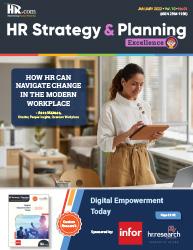
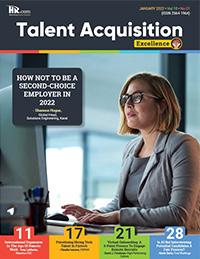

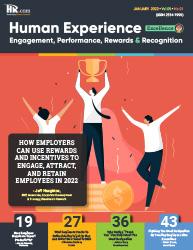
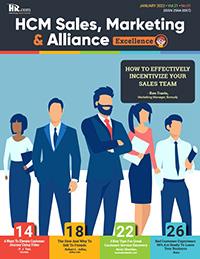


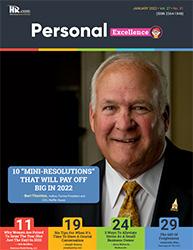

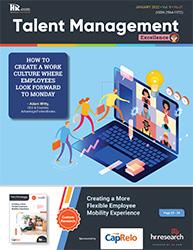
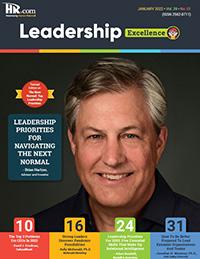
Audience
Talent Acquisition Excellence presented by HR.com OCTOBER 2022 116 Submit Your ArticlesLike to submit an article? Use our online submission form or for more information go to www.hr.com/ExcellencePublications Publications 13 Targeted
to Reach Your
Informing, Educating, Enlightening and Assisting HR professionals in their personal and professional development, the Excellence series offers high-quality content through the publications!

























 Julie Winkle Giulioni
Julie Winkle Giulioni










 By Abbey Carlton, Indeed
By Abbey Carlton, Indeed
























































































 Kathleen O’Donnell is a freelance writer. Would you like to comment?
Kathleen O’Donnell is a freelance writer. Would you like to comment?
















































 LEARN
LEARN













